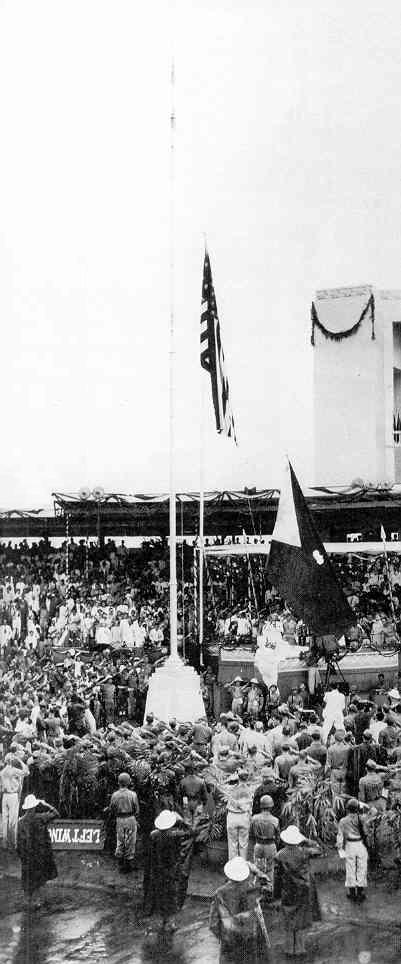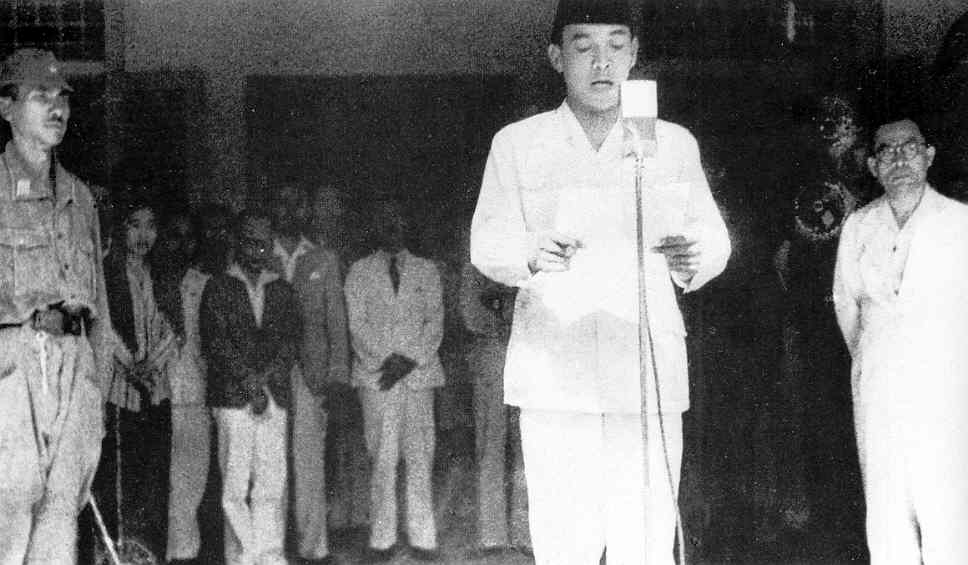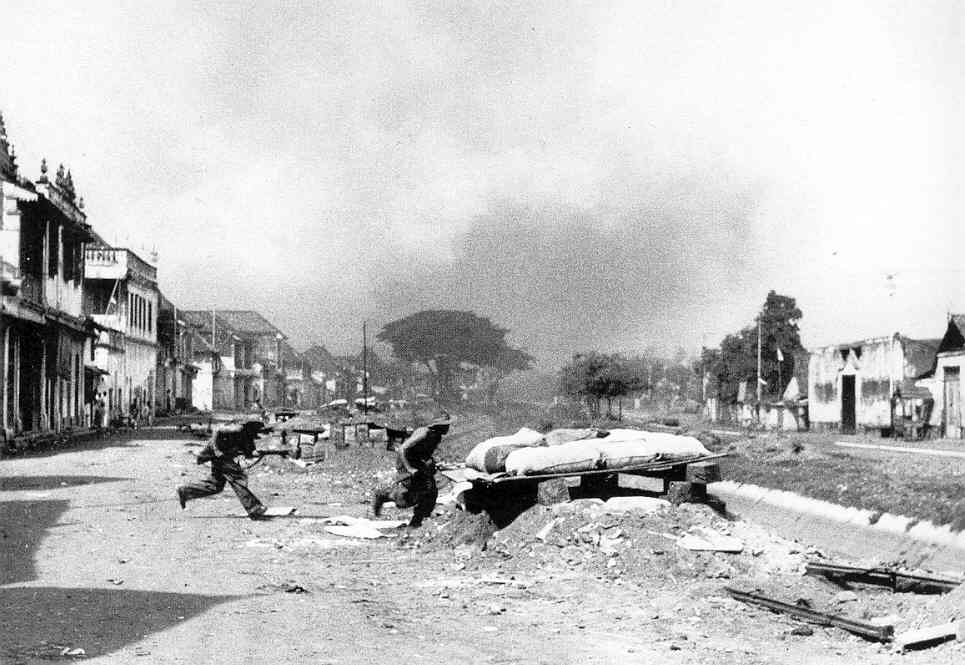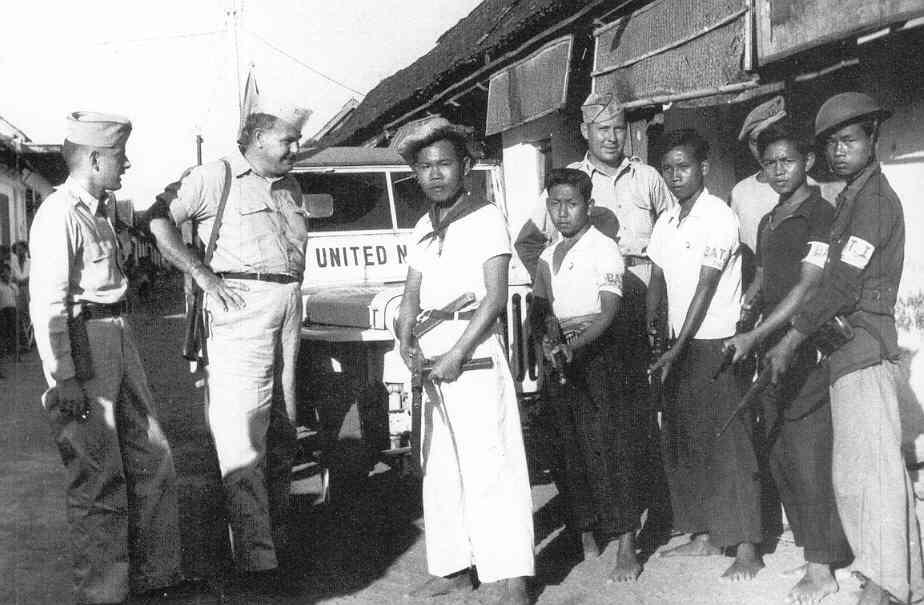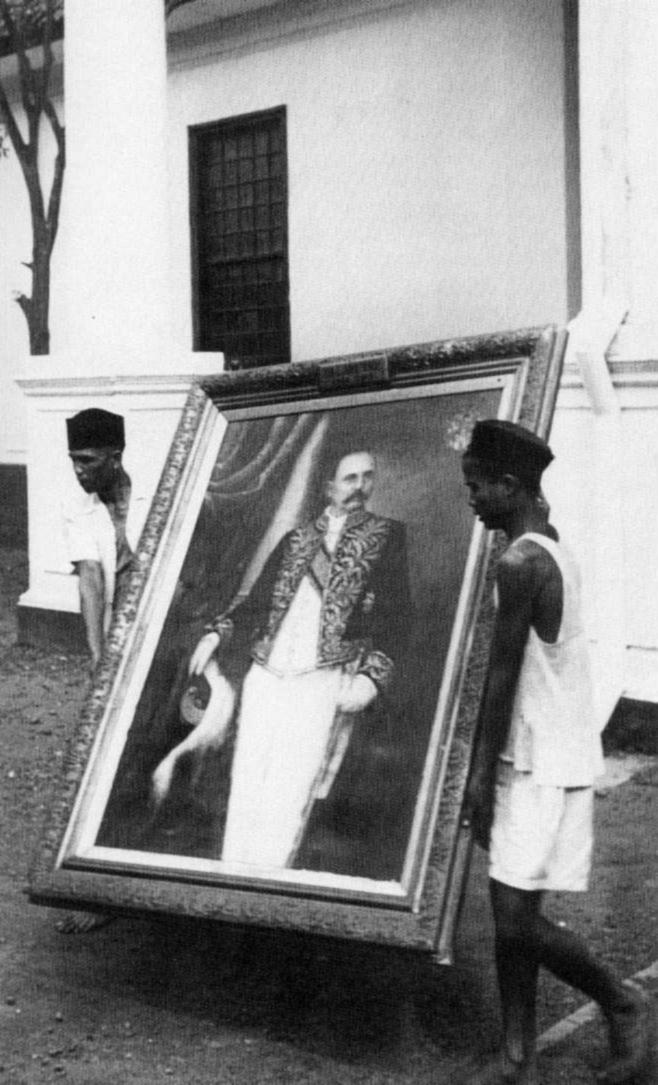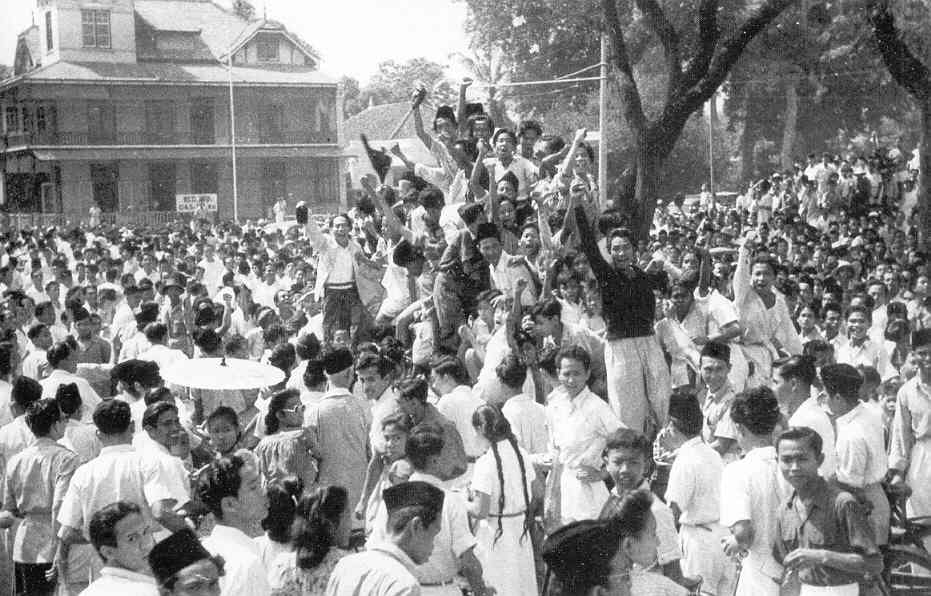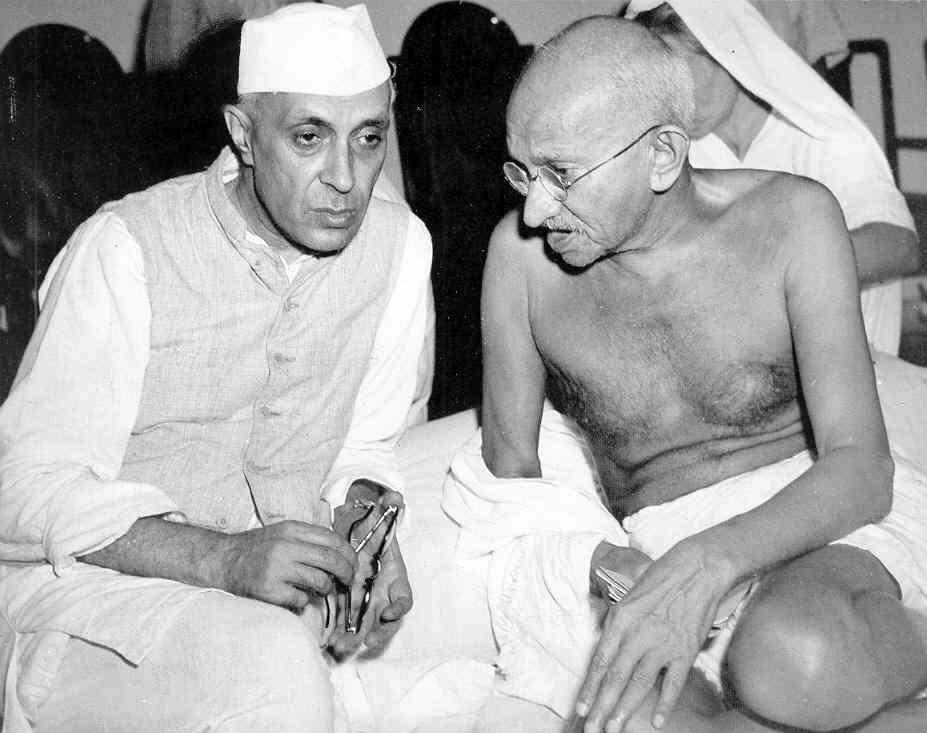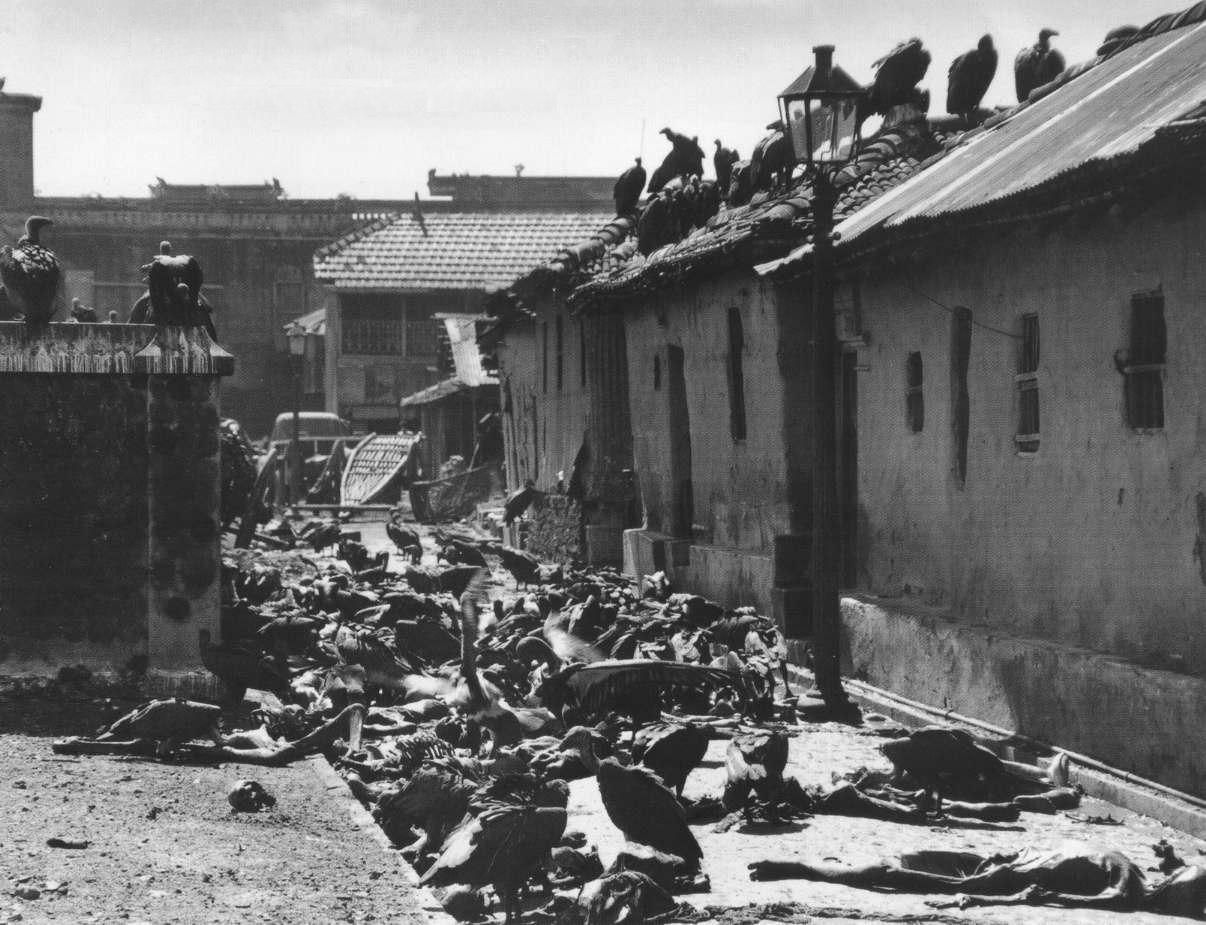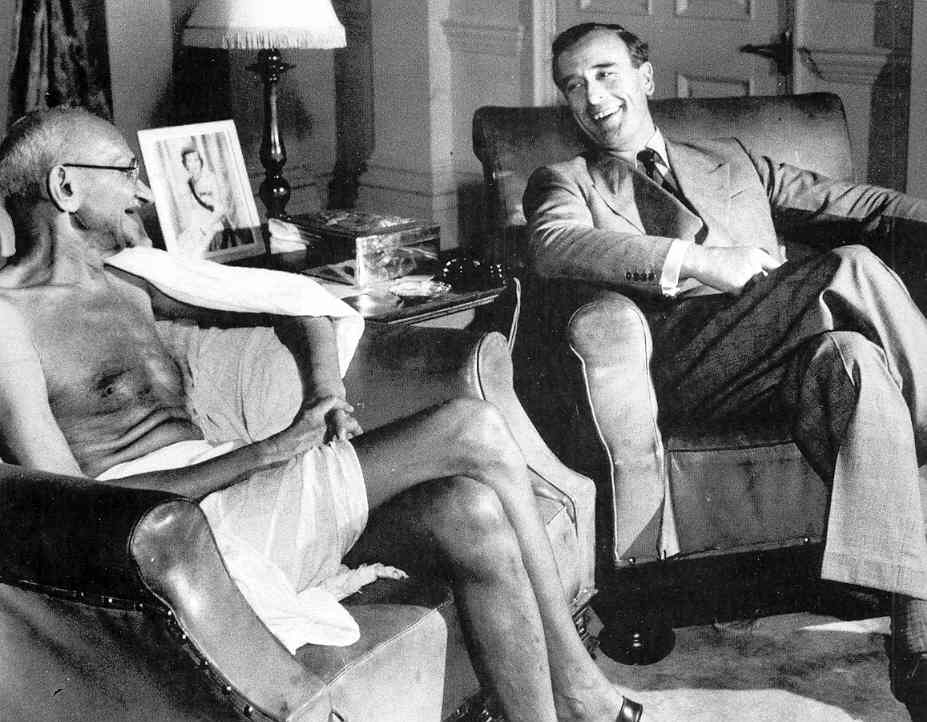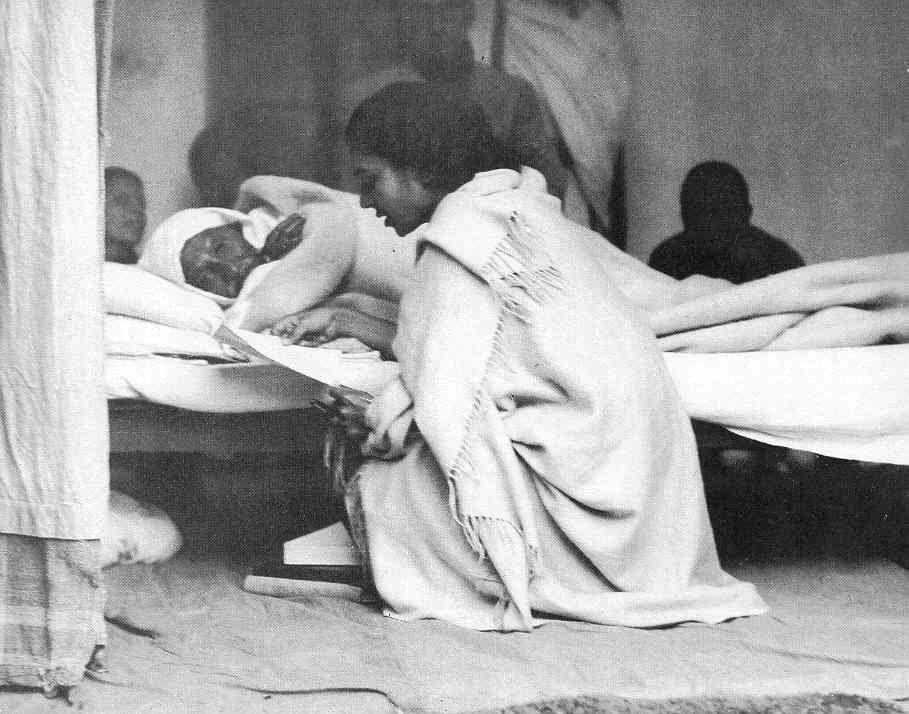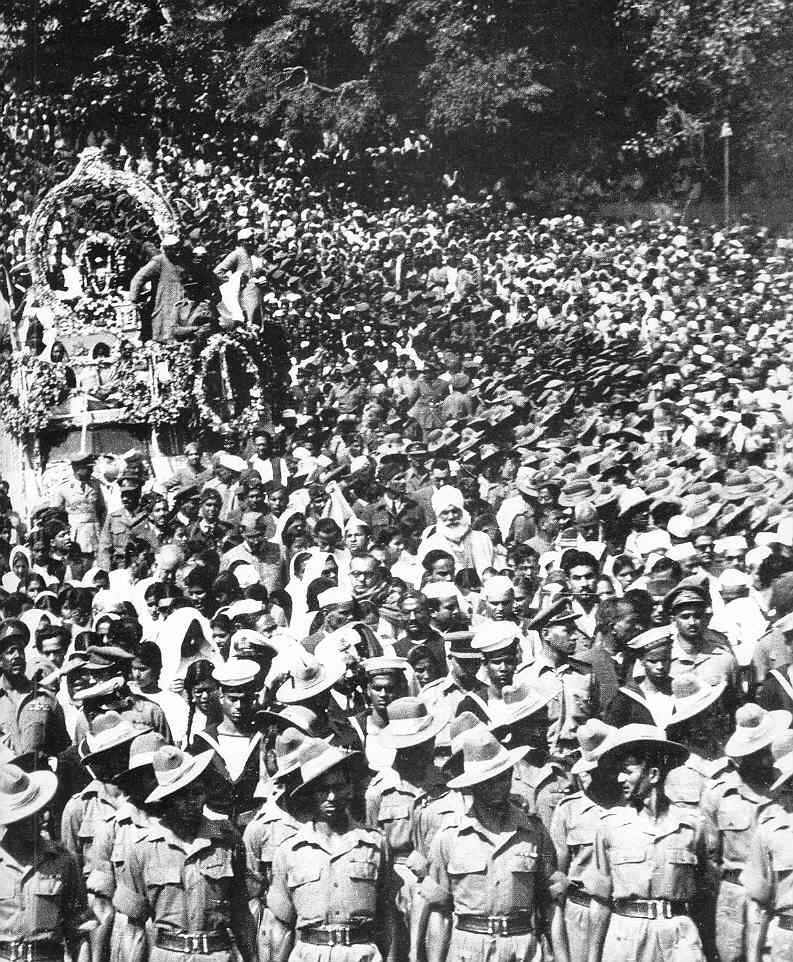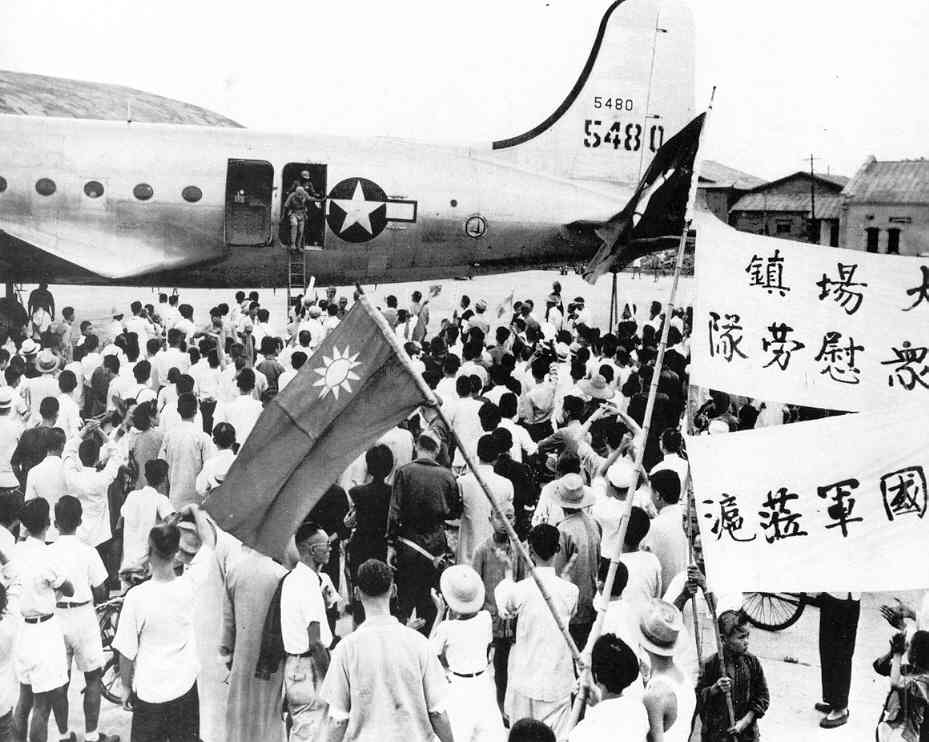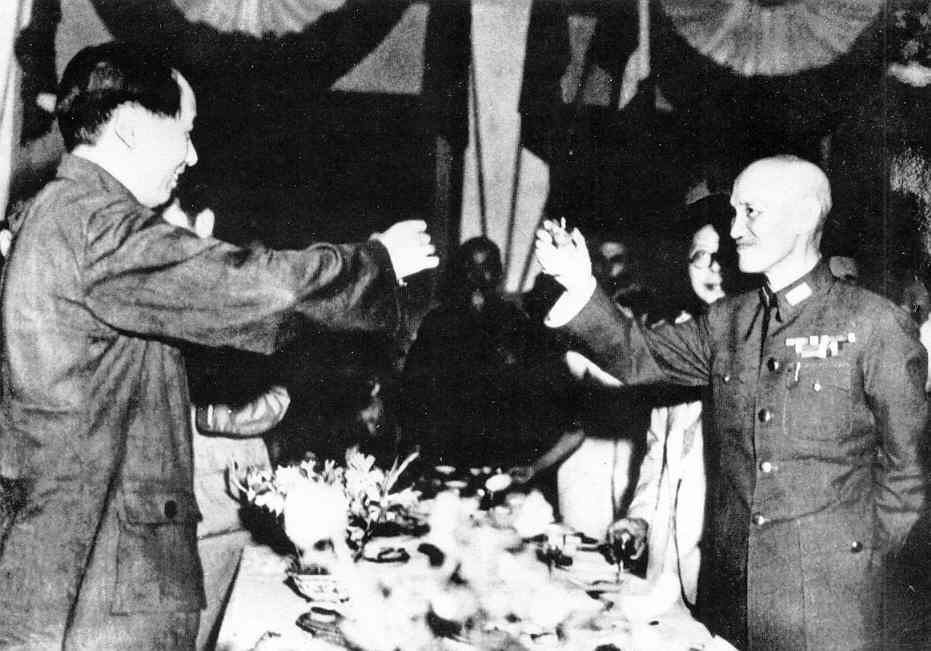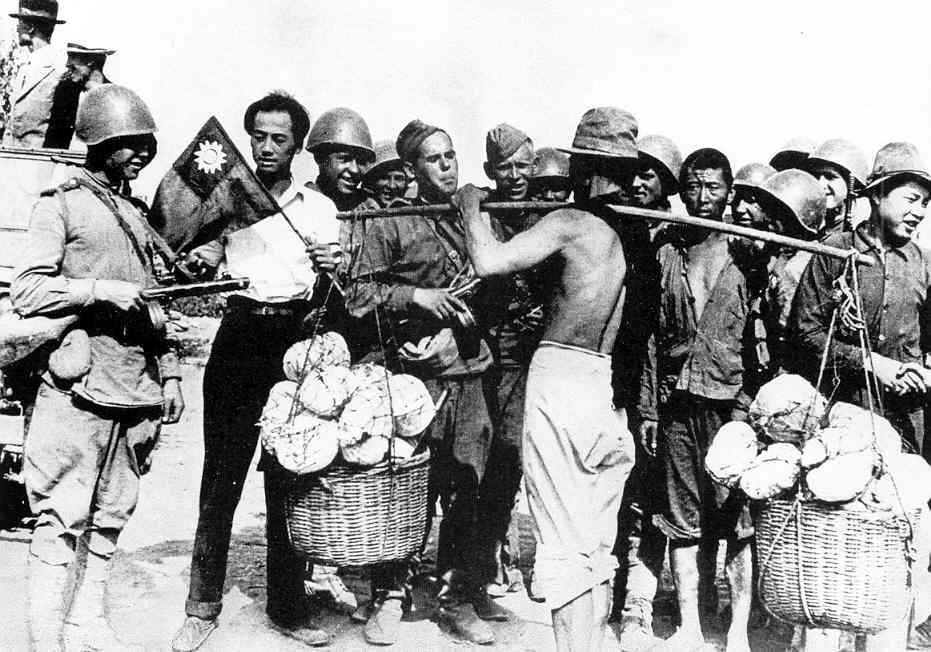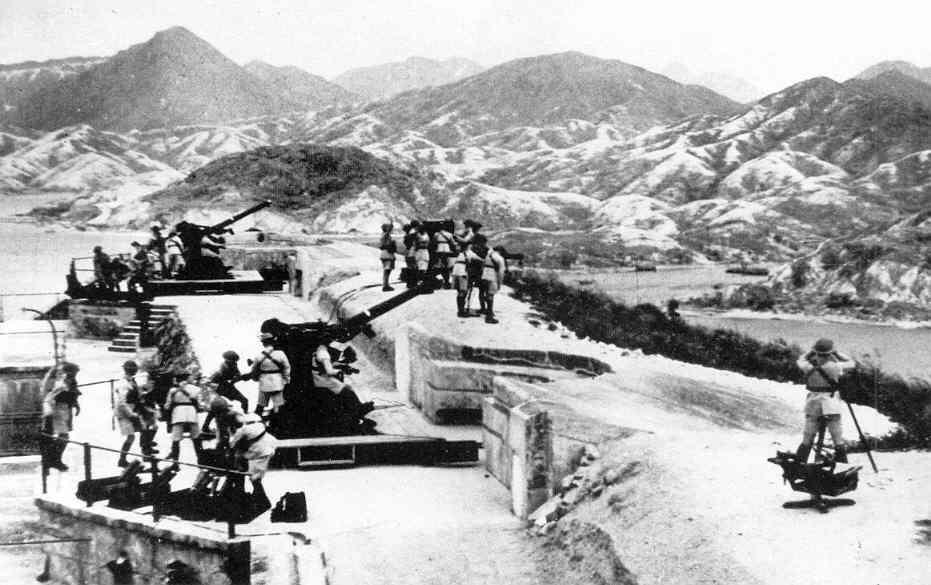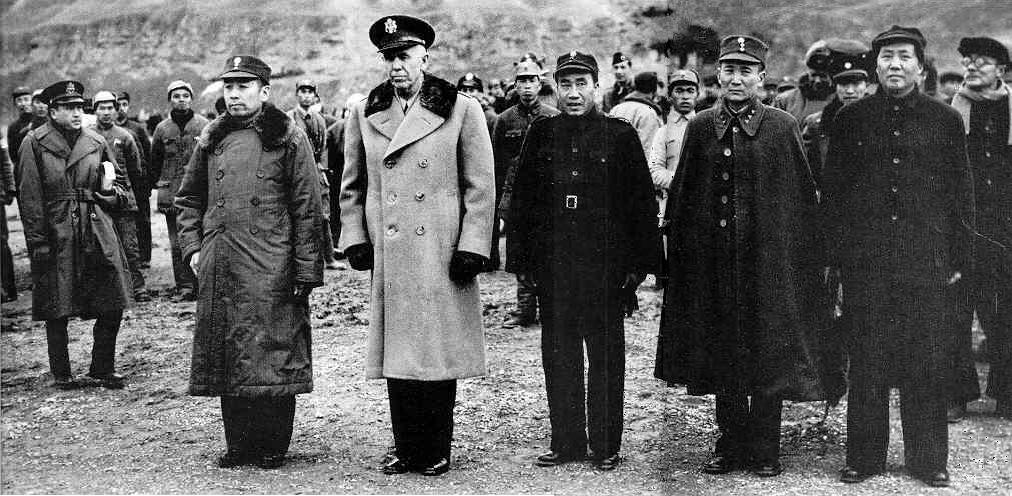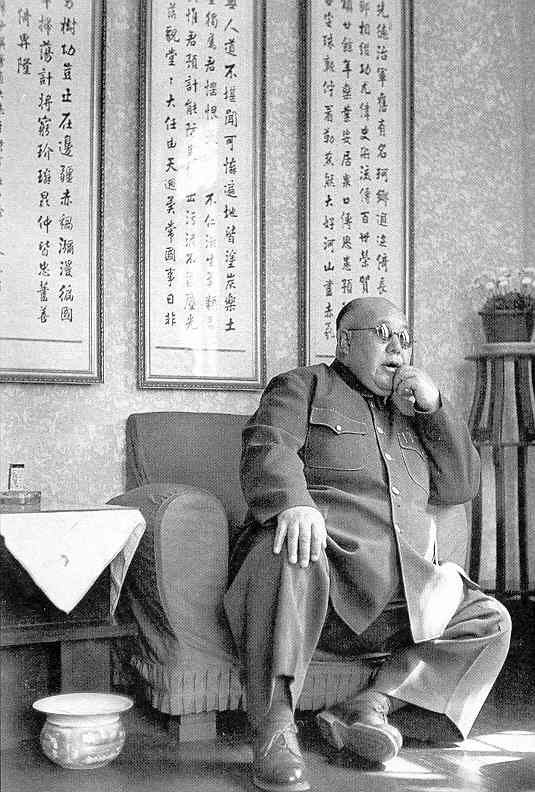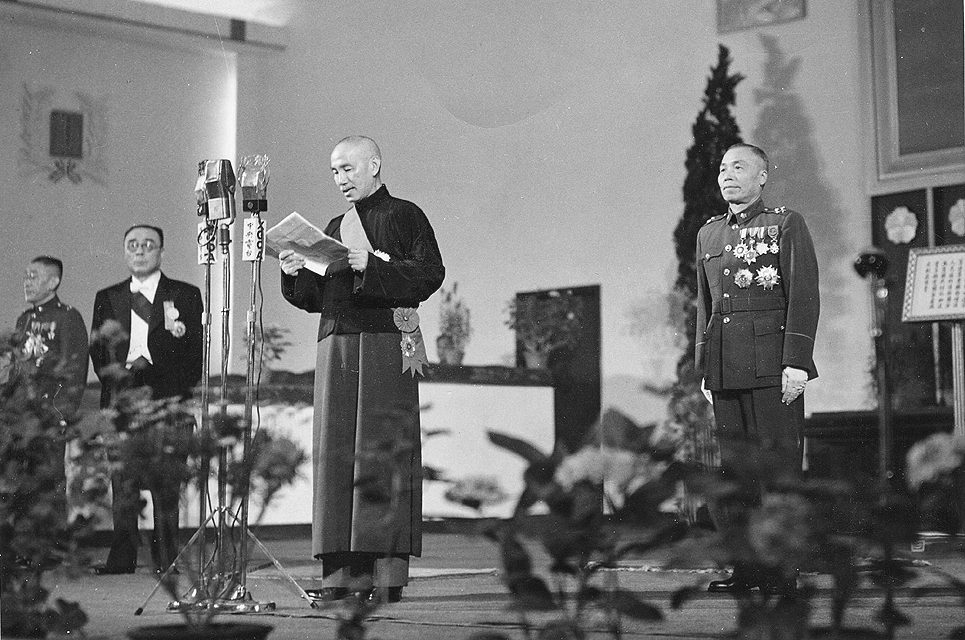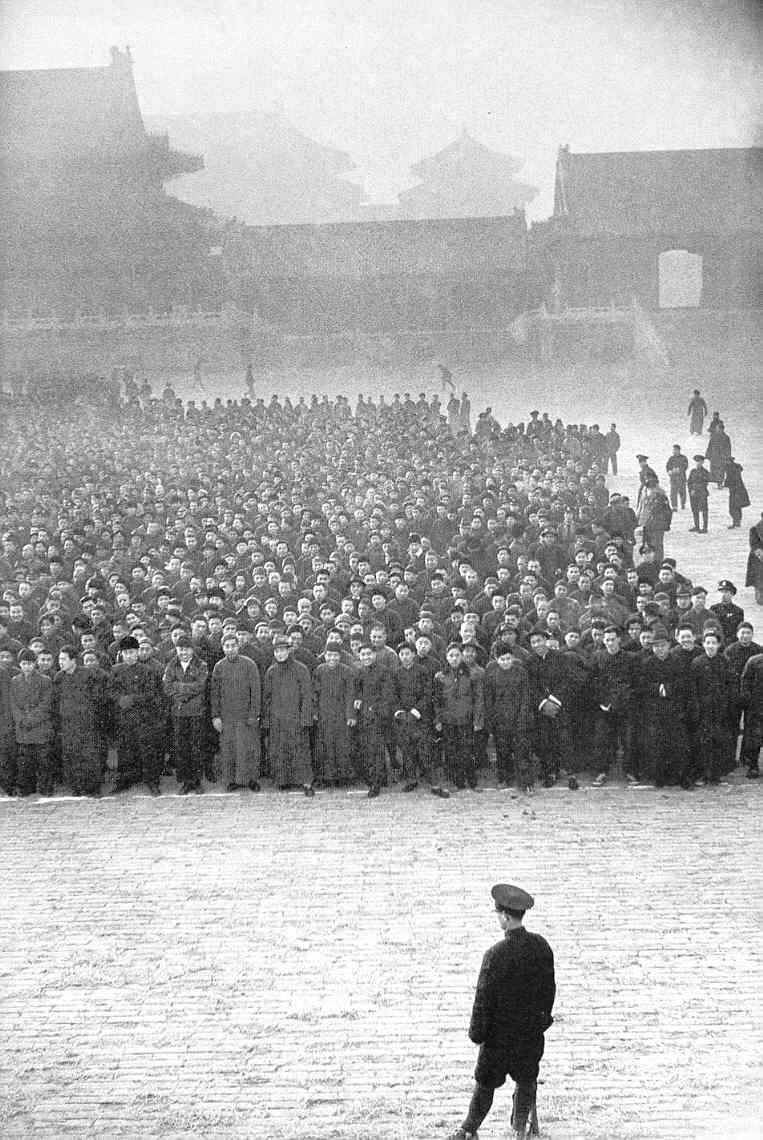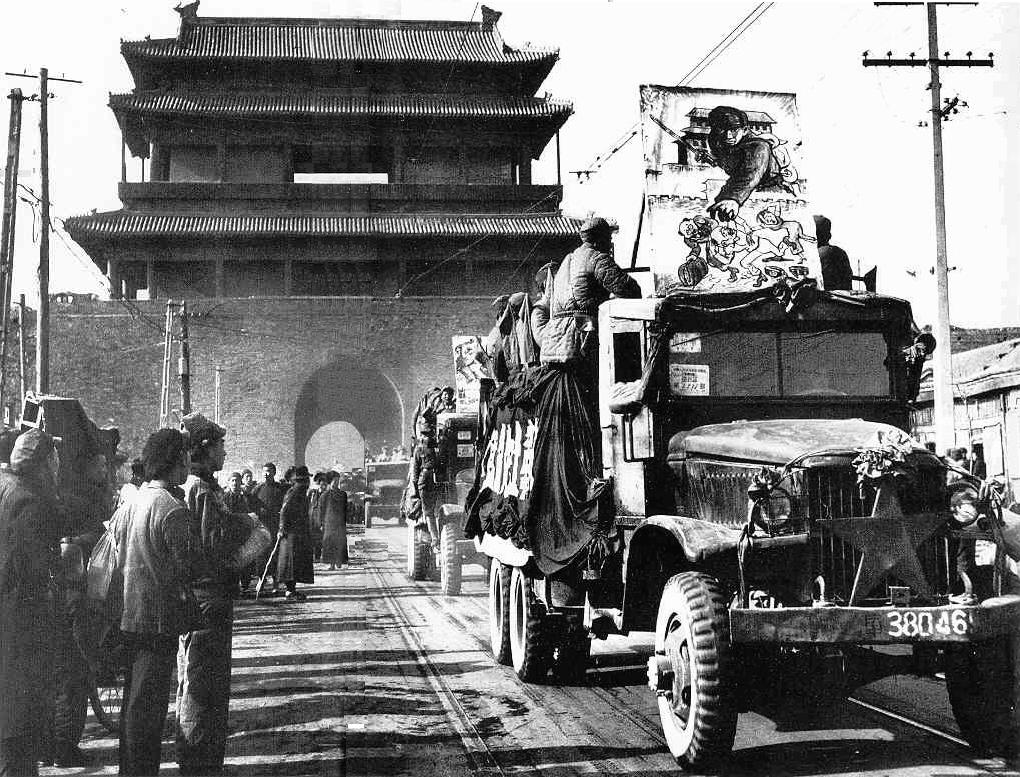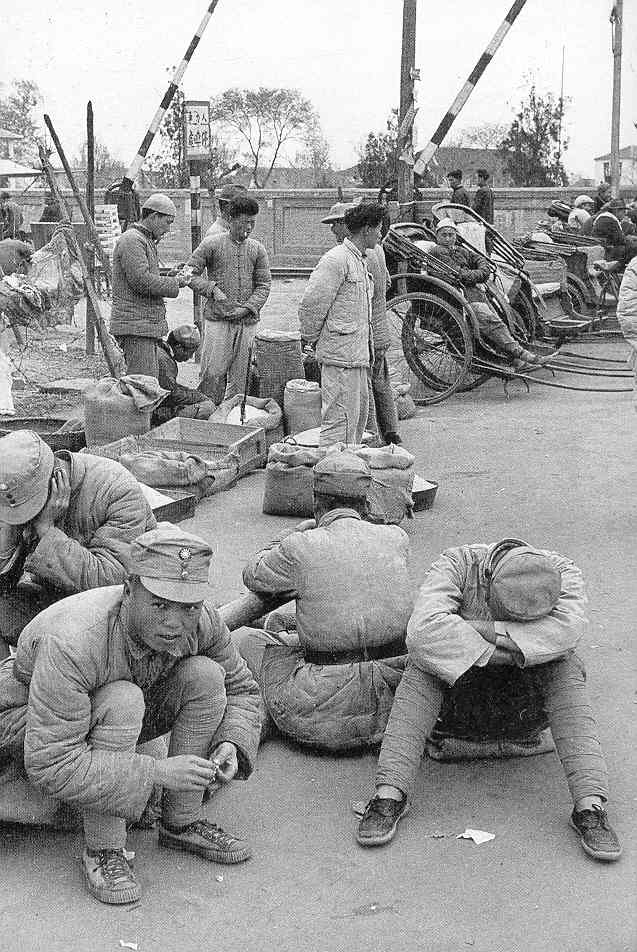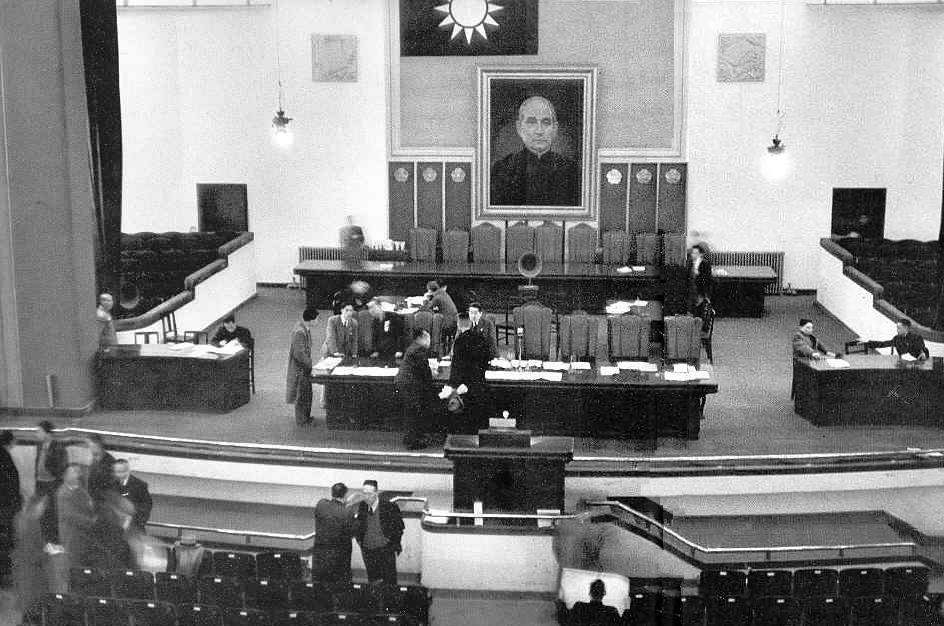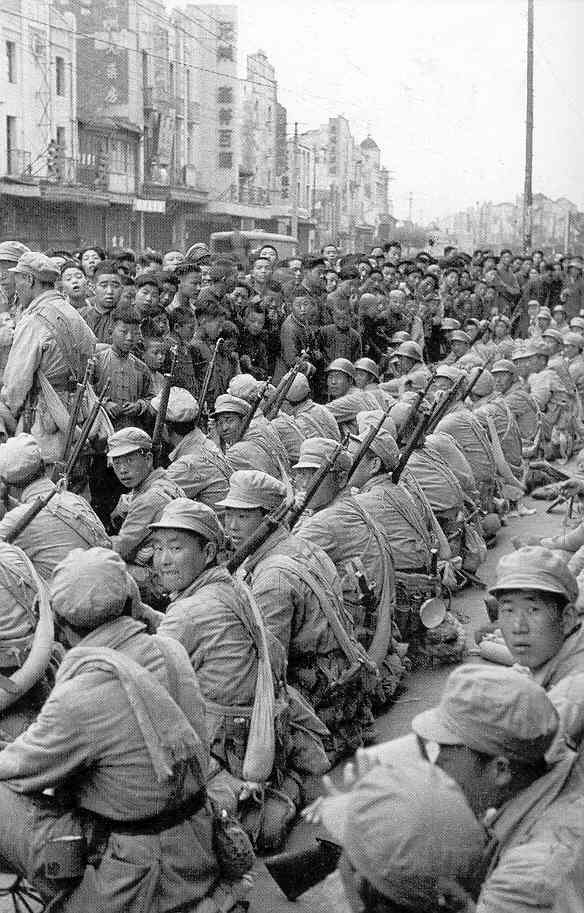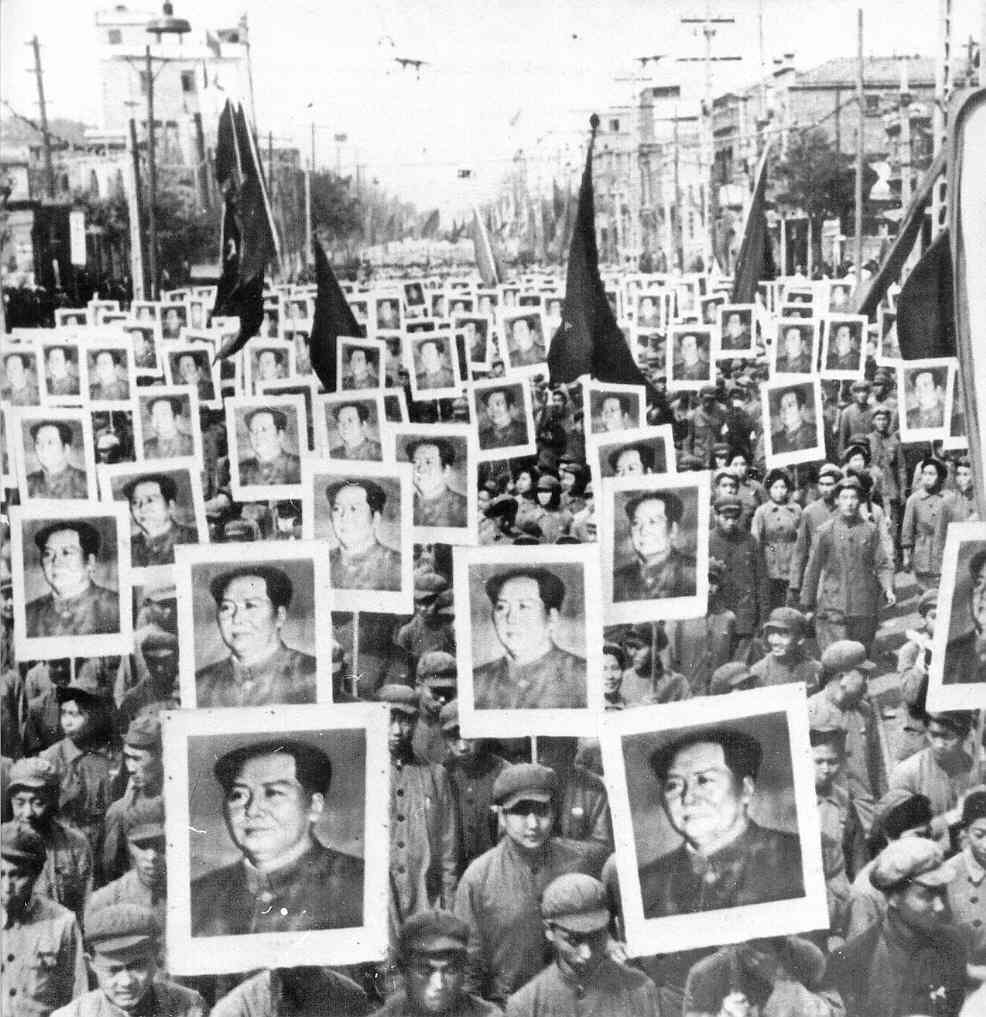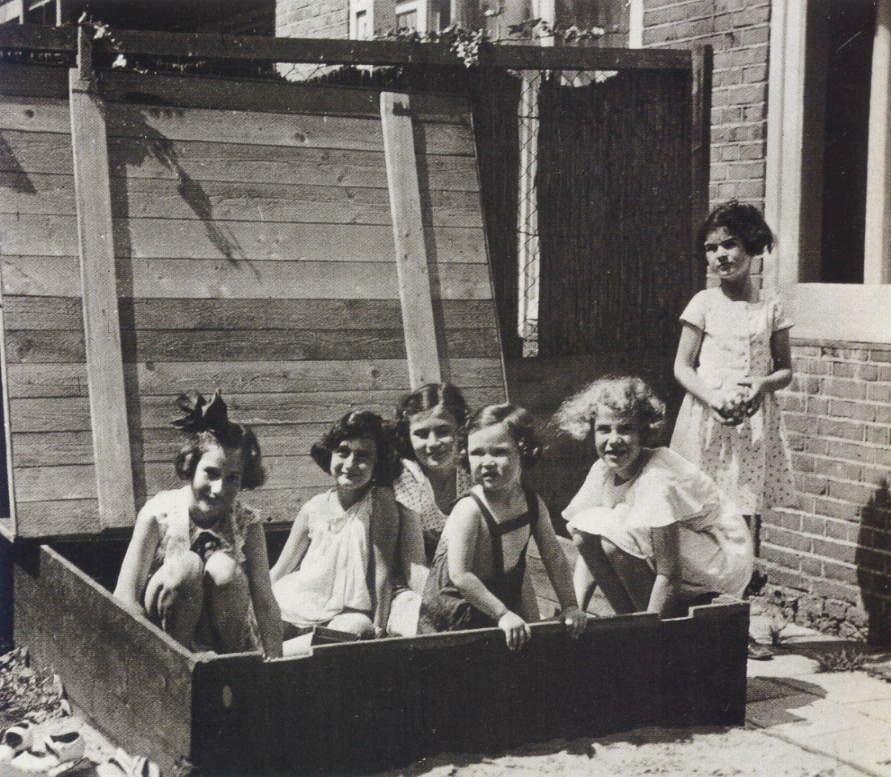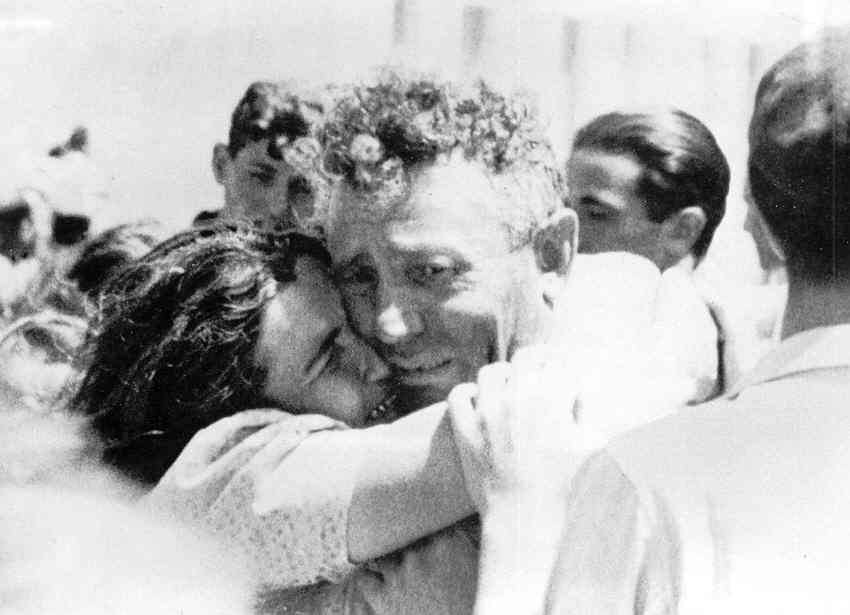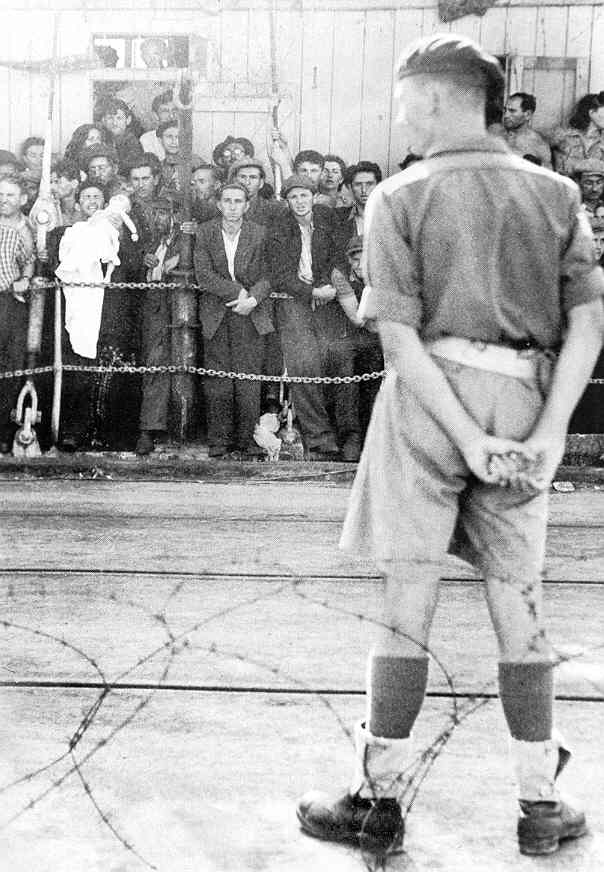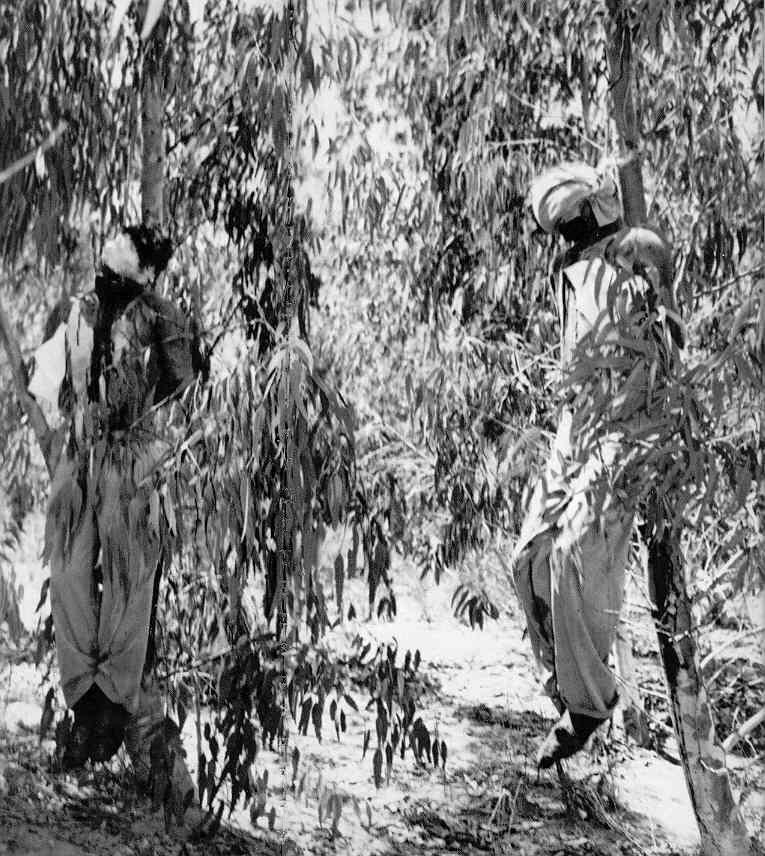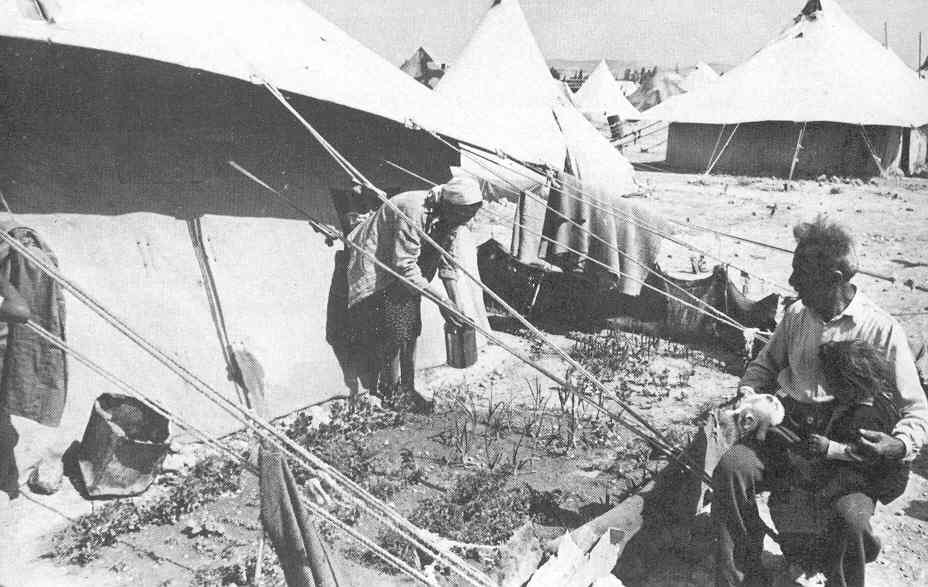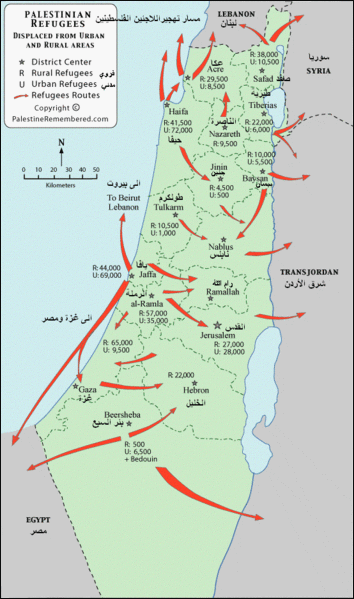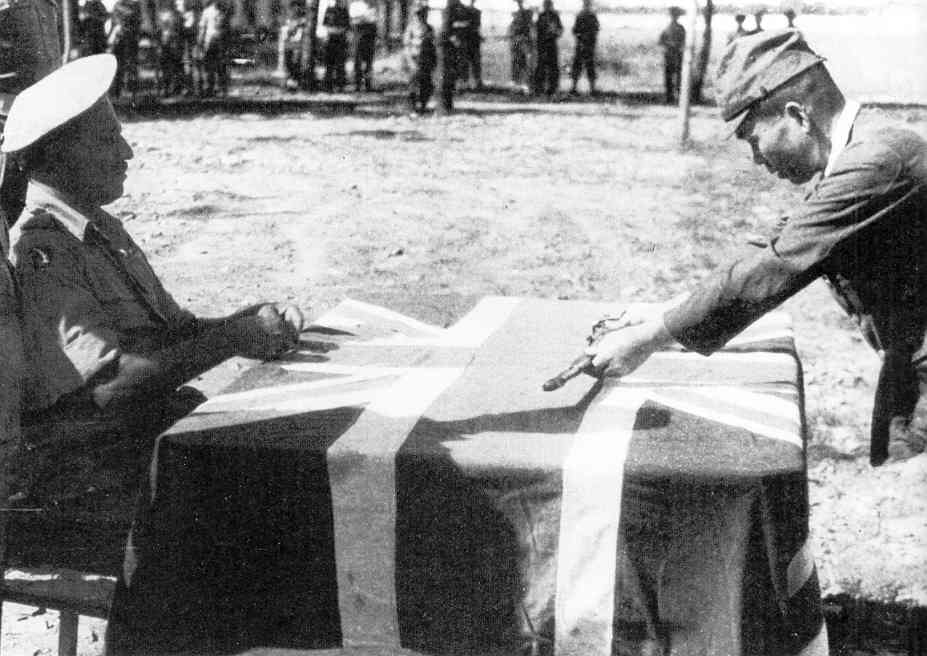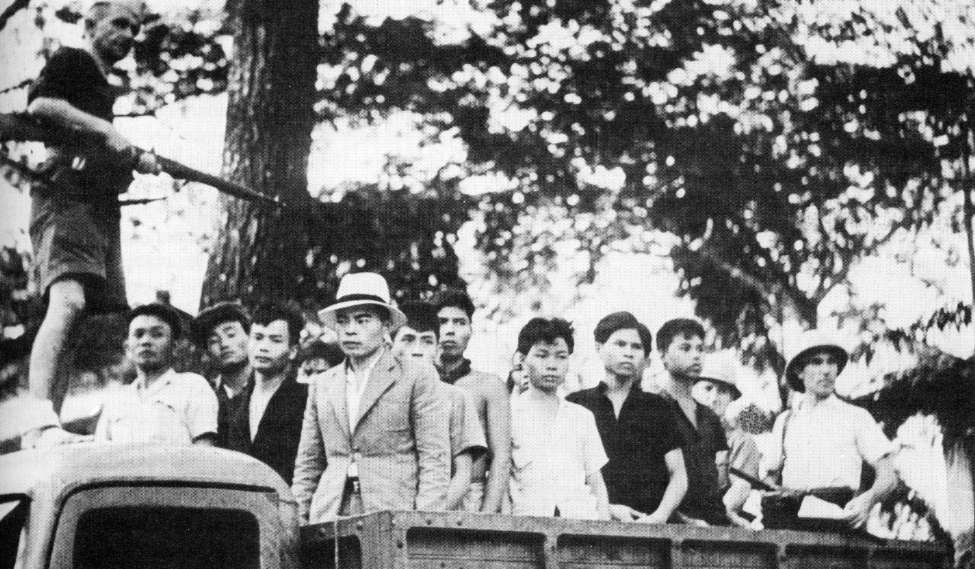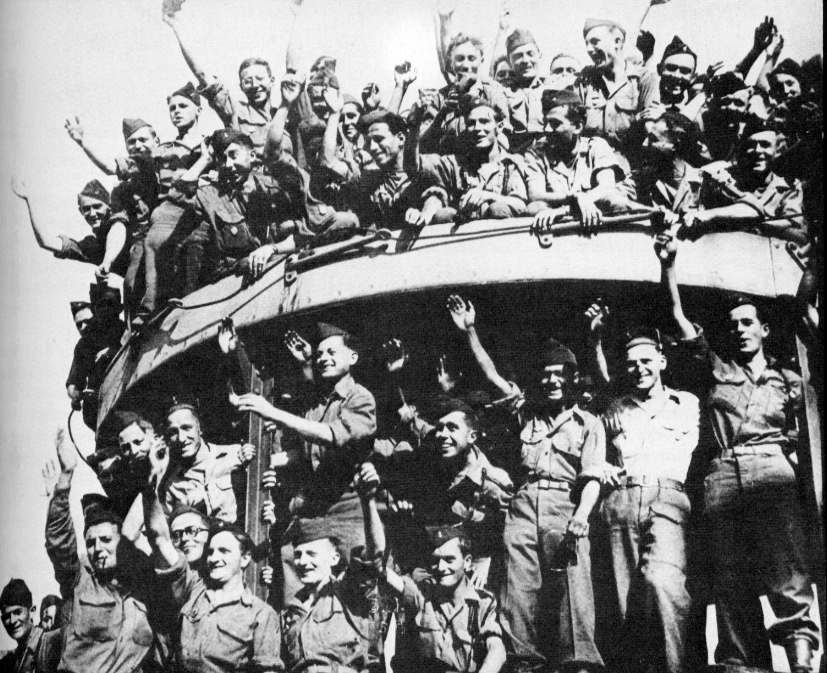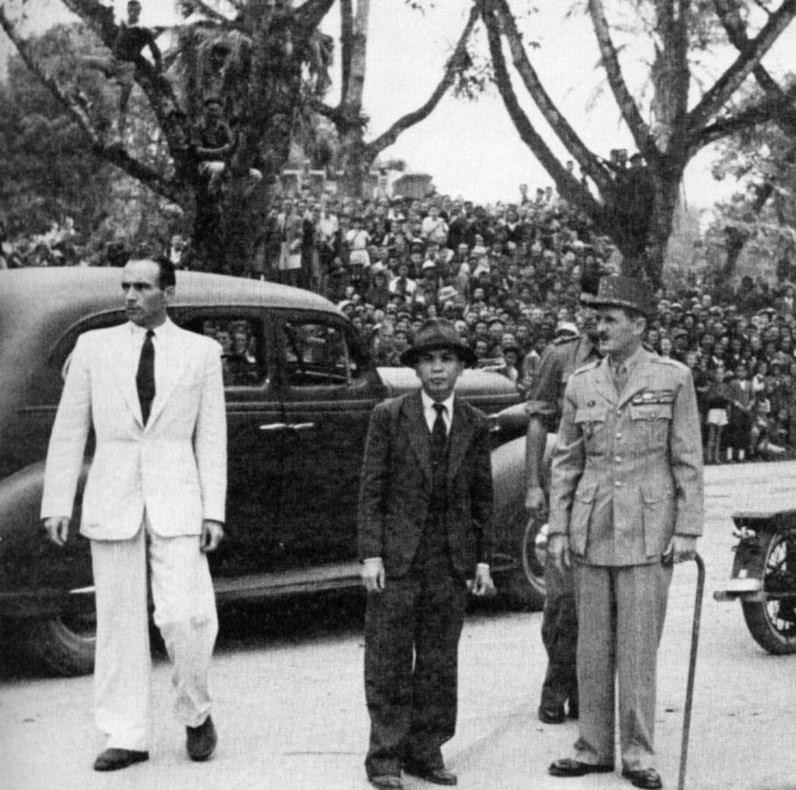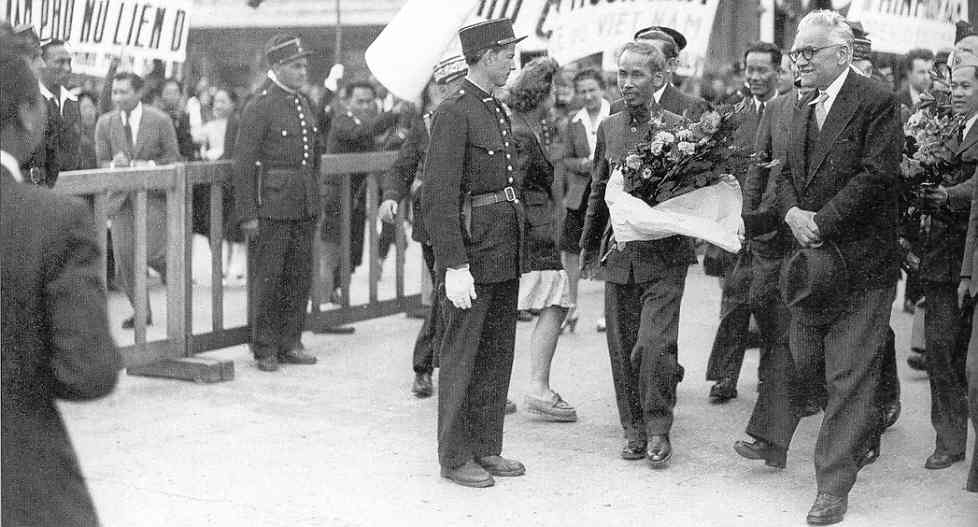19. A COLD WAR DEVELOPS

POST-WAR ASIA

POST-WAR ASIA
 American "Anti-Imperialism"
American "Anti-Imperialism"
 The Dutch struggle to keep their empire
The Dutch struggle to keep their empire
in Southeast Asia
 Under heavy pressure from Gandhi,
Under heavy pressure from Gandhi,
India receives Swaraj (independence)
 The Chinese Civil War (1947-1949)
The Chinese Civil War (1947-1949)
 The Israeli-Palestinian Question
The Israeli-Palestinian Question
 The French struggle to keep their empire
The French struggle to keep their empire
in Indochina
The textual material on this webpage is drawn directly from my work
America – The Covenant Nation © 2021, Volume Two, pages 70-84.
AMERICAN "ANTI-IMPERIALISM" |
|
Meanwhile, at the other end of the world, the war had its own powerful effect on the way things took shape in Asia – as the Americans and Europeans attempted to piece back together what had been their former place in the scheme of things. But that was not exactly going to happen. For the Europeans at least, their long-held position of dominance in the world seemed to be coming to a close. At the same time, the new superpower America was well-pleased to be able to demonstrate its Democratic Idealism when on July 4th, 1946, it finally accorded full independence to its partially self-governing Philippine dependency or Commonwealth of the Philippines, a move it had actually planned before the war with the Japanese erupted. |
Anti-imperialism even stood as the
keynote of American foreign policy, at least since the presidency of
Woodrow Wilson in the early 1900s. Disregarding their own march across
the North American continent – in which they swept aside the natural
resistance of the Indian tribes and Mexicans already established in the
American West in order to plant their own Anglo society there – and
likewise disregarding the military power used to force a slave-holding
South to remain in the Union minus its slaves, Americans had somehow
come to believe that American society had achieved its greatness
through simply its own superior moral qualities, its basic "goodness."
And thus America came to the conclusion that its mission in the world
was to demonstrate its commitment to those same high moral qualities by
insisting that its friends and allies take up the same
"post-imperialist" character. In other words, the rest of the world –
or at least those in the "Free World," as Americans were beginning to
term their particular sphere of global influence – must demonstrate the
same generosity by abandoning their imperial positions in the rest of
the world, just as America did in the Philippines. As Americans saw things, its European
friends were now – having failed to follow Wilson's call to do so after
World War One – finally to pull back from their global positions
outside of their own homelands in Europe. The British, French, Dutch,
Portuguese, Belgians, etc. needed to go home, and leave to the
oppressed peoples of the world their own right of "self-determination"
(self-government). Almost immediately those countries
experiencing American-encouraged (or even American-enforced)
independence would fall into violent civil war – finally brought to a
close through the takeover of a local dictator of the most brutal
variety, or it would get dragged into the bitter Soviet-American
competition for cultural dominance in these newly freed societies – new
battle zones in the on-going Cold War waged between these two
superpowers. Ironically, America would have great
difficulty in understanding how its "pro-democracy/anti-imperialism"
posturing would itself come across to others as highly imperialistic –
not to mention highly disruptive of a people's cherished social
order. And worse, America would simply refuse to take a close
look at the lessons about its own power programs that it should have
learned along the way, continuing to walk into the same disasters
generations later, still attempting the same failed Humanist Idealism
in Vietnam, Iran, Afghanistan, Iraq, Libya, Syria, not to mention in
multitudes of cases to the south of its own country in Guatemala, Cuba,
Panama, Nicaragua, Chile, etc. Americans refused to understand that
democracy is a social responsibility taken up by a society of
individuals well-trained to assume those responsibilities personally,
lest those responsibilities be taken on by autocratic or dictatorial
personalities, "enforcers" of a social order that the people themselves
were not able to bring into being – or maintain in the face of
energetic human ambition. Democracy is not "natural" to anyone. The
disciplines and responsibilities of democracy are either carefully
taught to rising generations by those most directly involved in the
social-moral indoctrination of children (namely their parents), or else
authentic democracy simply does not take place. It is not achieved by
natural instinct as Humanists believe – believe religiously. Humanism
itself is in fact a very frightful religion, because socially,
economically and politically it so easily becomes irresponsible – and
dangerous to human life. 1Many
Americans consider the War of Independence of the 1770s and 1780s as
the time of the nation's birth, not realizing that America had already
experienced 150 years of very formative independent existence by that
time. 2But moral self-congratulation has always been a blinding force in the lives of all-powerful people.
But in the days when the end was clearly
in sight for the Japanese Empire, the Japanese authorities – who for
three and a half years had held the Dutch colony under tight control
and who had destroyed much of the Dutch economic and social
infrastructure – worked hard to make the return of the Dutch to their
colony as difficult as possible. They encouraged the Asians to rise up
against the returning Dutch, supporting even in the days immediately
after the war a proclamation of Indonesian independence by the local
nationalist leader Sukarno and his close associate Mohammad Hatta.
Also, many of the weapons that the Japanese were forced to lay down in
surrender went purposely to arm the Indonesian nationalists. The Dutch
therefore found the return to their colony resisted heavily by a new
group of anti-Dutch nationalists. Indonesian resistance was chaotic,
because of the vast cultural mix found on the islands (including even a
large Chinese minority group). Ethnic massacres became frequent, with
tens of thousands reported killed or missing in the first year of the
resistance alone. Several thousand Europeans were known specifically to
have been tortured and executed and as many as 20,000 of mixed
European-Asian ancestry were killed or went missing (probably suffering
a similar fate, though most likely their bodies were thrown into the
sea; some mass graves were later uncovered). Also, some of the outer
islands (which were Christian rather than Muslim as was much of the
rest of the colony) were less than enthusiastic about the nationalist
uprising. In early 1946 the Dutch were back in
business enough to send an army to Indonesia in an attempt to bring the
region back under Dutch rule.2b And by 1947 the Dutch seemed to be
succeeding in re-establishing Dutch authority over its colony,
especially in the more populous areas of Sumatra and Java.
But the Dutch found that the Republicans were not really interested in
respecting the cease-fire line, and given their growing diplomatic
isolation the Dutch began to see their cause dying. Thus in late
December of 1948 they made one last grand effort to put themselves back
in power. They regained much of urban Indonesia, but could make no
progress in the countryside. Furthermore, the members of the U.N.
Security Council (including anti-imperialist America) were lining up
strongly against the Dutch. America not only cut off all Marshall Plan
aid originally designated for the rebuilding of Dutch Indonesia, but
threatened to cut off all aid to the Netherlands itself. Americans were
very unhappy at the thought that their grants in aid, which equaled
about half the budget allocated to the effort to restore Dutch rule in
Indonesia, could be indirectly supporting Dutch imperialism. With the world lining up against them, by
the summer of 1949 the Dutch were ready to quit. Discussions opened up
in August and by November the Dutch had come to an agreement in support
of Indonesian independence, under the man who would become Indonesia’s
dictator, until another military leader, Suharto, forced him to step
down in 1967 – in one of the 20th century’s most brutal takeovers.
Suharto would then rule Indonesia for the next thirty-one years. And
thus it was with the Dutch gone, Indonesia stepped into
"self-government."
Unlike the Dutch, the British under Clement
Atlee's post-war Labour Ministry were rather eager to divest themselves
of their former responsibilities in Asia. The British Labour Party
always had a strong distaste for empire, claiming that Britain's
economic investments in India undercut jobs for the working class in
Britain itself, not realizing that the Indian connection actually fed
British industrialism – and thus jobs for British laborers. Also,
Labour considered economic problems at home far more important than
Great Britain's former responsibilities in the larger world (one of the
reasons why Churchill came to America in 1946 to appeal to America to
take up the responsibilities that used to belong to Great Britain). Even in his days as British Prime
Minister, Churchill knew that India was going to have to be granted a
greater degree of self-rule, although he was hoping that somehow India
would still remain as a member of the British Empire that he loved so
much. But Mohandas Gandhi always had other
plans. He wanted the English to "Quit India" entirely. He not only
wanted the English gone but also the culture they had brought with them
to India. Gandhi had some kind of fond dream of India returning to some
version of an ancient Indian grandeur – pre-industrial, pre-modern.
Thus he had shed his Western lawyer's attire, had taken up the
appearance of a Hindu holy man, and had set a proper Indian economic
example by spinning his own yarn at his spinning wheel, to make his own
clothing. His goal therefore in his quest of Indian independence was
not to achieve modern industrialism on India's own national model, but
to ditch modern industrialism altogether.3 On this matter however his view was not
widely shared by his colleagues in the Indian nationalist movement, in
particular Jawaharlal Nehru (the future prime minister of independent
India) who was an ardent modernizer. Nonetheless, the other Indian
nationalists humored Gandhi in his romantic vision of independent
India. He was, after all, the Mahatma or Great Soul of India. They
needed his charisma to give momentum to their independence movement. But British India was a complex of a
number of ancient states, various languages, even different religious
communities (Hindu, Islam, Sikh, Parsi), not to mention different
castes that had rigid rules keeping them at a distance from each other.
India was not really a nation, but instead a Europe-sized subcontinent
of some 500+ states. The British had maintained authority in this
complex India through an array of different treaties with the rajas
(Indian rulers) of these states, British Indian government supplemented
by a huge bureaucracy that directed the rest of the Indian subcontinent
not covered by these treaties. How Gandhi was going to hold all this
together following a British departure was something that remained a
mystery to everyone. To the sizeable Muslim community in India, the
vision projected by Gandhi was deeply disturbing, because it definitely
had strong Hindu overtones. The Muslims, used to centuries of Muslim
control over the subcontinent prior to the arrival of the British, had
no desire to see the Hindus take up where the Muslims once left off.
Indeed, the Muslim League, speaking on behalf of India's Muslim
community, wanted no part of Gandhi's India. They thus petitioned the
Atlee government to set up separate Muslim and Hindu states or
dominions at independence, in particular an independent Pakistan4 to gather the Muslims. That was not going to be easy, and not
just because Gandhi stood entirely opposed to the dividing up of his
India. Muslim communities were most prevalent in the very western and
the very eastern parts of India. But by and large there was a good mix
of both Muslims and Hindus all through India. Also the definition of
Muslim or Hindu states had traditionally depended on the religion of
the raj rather than the people themselves within these different Indian
states. If India were to be divided into separate Muslim and Hindu
states, how would boundaries thus be defined? And what about Kashmir
for instance? It would be very hard to decide where a Muslim-Hindu
boundary line would be drawn through this northern province. Then there was also the question of the
large Sikh community living in the west and northwest of India, who
historically had a huge empire in southern Afghanistan and northern
India, located principally at the headwaters of the Indus River, the
Punjab (Five Waters). Their fate now however was most uncertain amidst
this contention between the Hindus and Muslims. There really was no good answer as to
what the Indian subcontinent was to look like with the British
departure. But the British were quickly losing interest in the
question. British Lord Mountbatten (a member of the British royal
family and Viceroy of India) was given instructions by the British
government to prepare India for independence, by no later than 1948.
But seeing the dangers of communal schism mounting, Mountbatten pressed
for an early date and got representatives of the Hindu, Muslim and Sikh
communities to come to an agreement in June of 1947, calling for
independence within the next couple of months. (Gandhi remained
adamantly opposed to the agreement by which India was partitioned). On
August 15th British rule ended in India. Seeing the division of India taking shape and (rightly) fearing massive genocide, millions5
of Muslims, Sikhs and Hindus took to the roads to get to areas where
their religion would dominate. Hundreds of thousands died in the brutal
chaos which accompanied these mass migrations.6 The worst off perhaps were the Sikhs, who ultimately got no particular region designated as devoted to their people.
It was perhaps merciful that it was a Hindu and not a Muslim that
gunned him down; had it been the latter, the Hindu-Muslim violence
would have been far, far worse than it already was. In fact the
assassination helped sober up some of the extremists, and bring the new
Indian leadership together (they were finding themselves quite divided
over policy issues as independence approached). It also resolved a question which hung
over India at independence. In which direction was India to head:
towards Gandhi's pre-industrial traditionalism or towards Nehru's
modern industrialism? With the loss of Gandhi, India now moved in
Nehru's direction (and under his leadership until his death in 1964).
India was thus spared an ideological feud between Gandhi and Nehru that
might have turned quite ugly. India did not long remain a Dominion
within the British Commonwealth. In 1950 India drafted a new
constitution ending its existence as a Dominion, recasting itself now
as a Republic (nonetheless remaining within the British Commonwealth of
Nations). 3Gandhi
seemed blissfully unaware of the fact that his effort to move India
back into some kind of pre-industrial utopia would have put India at
such a low level of economic capacity that millions of Indians would
most likely have starved to death. 4Part
of the name came from istan meaning place or land; Pak has a dual
source as both the Urdu word for pure (thus Land of the Pure) or simply
the acronym for the northeast region of Punjab, Afghanistan and
Kashmir, or cleverly, both. 5The United Nations estimated that 14 million people were displaced during this migration. 6The exact death count is hard to calculate. The numbers vary from a low of 200,000 to a high of 2 million.
12 days later (January 30th) he was assassinated by a Hindu fanatic who was embittered
by Gandhi's toleration of Muslims. Ironic
justice for the London-trained lawyer Gandhi ... in his highly
Romanticized effort to bring down India's well-developed social system
(which was too "English" for him personally).
Meanwhile things were getting very much out of
hand in China. At the end of the war in 1945 the elected government led
by America's wartime ally, Chinese President Chiang Kai-shek, was in a
very shaky position. Chiang's public image in China had been badly
tarnished during the war by the failures of his Nationalist (or
Kuomintang) army to stop the Japanese from taking over the coastal
cities of China (where his main support was originally concentrated)
and by his having to rely on corrupt warlords and on foreigners
(principally Americans) to maintain him in power in the Chinese rural
interior to which he had to retreat during the war. Meanwhile the Communist guerrilla leader
Mao Tse-tung (Mao Zedong) had built up a rapidly growing following: an
army of Chinese peasants. But Mao and his army largely sat out the war.
Mao had been virtually no help in getting the Japanese out of China,
but was focused mostly on escaping the wrath of Chiang and his
Nationalist army, which was heavily preoccupied with the Japanese.
Mao's hit and run operations against extended Japanese positions gained
him respect in the eyes of his fellow Chinese, but strategically did
little to dislodge the Japanese army occupying the country. In sum, the
Chinese took note of the fact that Mao had succeeded in not humiliating
himself and his army with some embarrassing failure, whereas Chiang and
his army (burdened with the greater war responsibility) appeared less
than impressive as defenders of the dignity of China. In the eyes of the average Chinese this
was a highly shameful situation for any Chinese ruler to find himself
in. It registered with the Chinese much the same way the ancient idea
of the Tianming (Mandate of Heaven) had once operated: such shame was
the sure sign of the loss of that precious mandate deriving from the
powers of Heaven (Tian). This would be a very difficult assessment for
President Chiang to overcome, and all the American China experts were
well aware of this fact. Economic factors also influenced the
direction that China was to take after the war. Mao promised future
land reform to the peasants, offering to seize the property rights of
wealthy absentee landlords and hand land titles over to the peasants7
– making Mao very popular with the huge peasant population.
Additionally, Chiang's inability to control inflation which skyrocketed
after the war, destroying the savings of the urban middle class,
undercut deeply the support of the one group that Chiang's Republic of
China could usually count on. Mao clearly was gaining political
strength at the same rate that Chiang was losing his. American diplomats (importantly Marshall)
attempted at war's end to get the two Chinese factions to work together
to rebuild China. But neither leader was willing to work with the
other, their hatred for each other was so intense. Meanwhile, although openly Stalin
supported Chiang's Republic of China, he was less openly supporting
Mao's peasant army by seeing that weapons surrendered by the Japanese
in Manchuria (which had been granted at Yalta to Russia to administer
after the war) came into the hands of Mao's army, and also let Mao and
his army move into controlling position in Manchuria as well. Truman countered by ordering the
airlifting of thousands of Chiang's troops into eastern Manchuria (and
sending U.S. troops there as well). But beyond that, there really was
little America could do, as American power was spread thin with its
occupation of Japan and its support of Western Europe. America could
not resolve the problems of both Asia and Europe at the same time, and
the situation in Europe appeared to be clearly more menacing to America
than the situation in China. Again, Truman and his advisors8
tended to look at the situation in politically Realist terms of the
specifics of national interest (great in Europe but less so in China)
rather than political Idealist or ideological (general anti-Communism)
terms. But that sophistication would not be easily understood by the
American people, who more readily (often only) thought passionately in
Idealistic or ideological terms. By mid-1946 the enmity between Mao and
Chiang finally erupted into a full-scale war. Mao’s army tended to
follow the program of passive resistance, slowly wearing down Chiang’s
army in skirmishes fought in the countryside, at the same time that
Mao’s army was expanding in size and territorial control. With each
small victory of Mao over Chiang’s troops, better weapons (including
tanks) fell into the hands of Mao’s rapidly growing Communist army. By 1948 the Communists were ready to take
on Chiang’s positions in China's cities. Over the course of 1948 one
city after another fell to Mao’s troops. In a two-month time period
alone, between the beginning of December 1948 and the end of January
1949, numerous strategic cities in the north, including the
all-important Beiping (Beijing), fell to Mao. Then in April of 1949
Mao’s troops were able to cross the Yangtze River to attack and capture
the Republic's capital at Nanjing. Now Chiang’s troops were having to
retreat south all the way to Canton. On October 1st, Mao announced the
establishment of the People's Republic of China, with its new capital
at Beiping. What was left of Chiang's army and political supporters –
some two million of them – managed to escape the Chinese mainland and
get themselves to the island of Taiwan. And with that, a new Chinese status quo
set in. There would now be two Chinas, one with its capital at Beijing
and one with its capital at Taipei on the island Taiwan. Which one
would be entitled to the all-important China seat at the United Nations
would become a point of major contention in the growing Cold War, as
America would recognize only Chiang's government as the legitimate
voice of China – and pressured its allies to do the same. The Soviets demanded that China's U.N.
seat go to Mao's government in Beijing, and demonstrated their
irritation at American intransigence by proceeding to boycott sessions
of the U.N. Security Council, hoping to force other U.N. members to
formally recognize Mao's regime as the true government of China. They
would soon regret the decision to boycott those U.N. sessions. 7But
then in 1958 Mao would take away that same ownership of the peasants’
lands when he forcibly "collectivized" China’s agricultural holdings
with his "Great Leap Forward." 8Truman's
small society of foreign policy advisors was outstanding: besides
Marshall, Acheson, Lovett and Kennan, the list included Chip Bohlen,
Averell Harriman, Paul Nitze, John McCloy and many other highly
talented American statesmen. Most of these men served as advisors in
some capacity from the Roosevelt Administration all the way to the Johnson
Administration in the mid-1960s.
The ancient contest among Jews, Christians and Muslims At around the same time but at the other
side of Asia, along the shores of the eastern Mediterranean, the
British were facing another set of responsibilities, ones also that
Atlee's British government seemed to have little desire to carry. The
issue was Palestine – and who had the right/responsibility to govern it. The region had long been a place of major
contention, being sacred land to three different religions: Judaism,
Christianity and Islam. It anciently was held by the Jews, until the
Roman diaspora (scattering) of the Jews for their part in major
uprisings against Rome in the 1st and 2nd centuries A.D. The city of
Jerusalem had been not only the capital of the region but the political
focal point of all who called themselves Jews, anciently as well as
presently. But the area was also the homeland of Jesus (the Christ) and
as the Christian Holy Land, something of a spiritual center of
Christianity. And the Muslims also claimed the area, or more
particularly Jerusalem, as the third most holy site in Islam The area became distinctly Christian with
the conversion of the Roman Emperor Constantine to Christianity in 313,
but then was overrun by Arab Muslims in 637. Christian crusaders had
briefly wrested it from the Muslims in 1099, but lost it again to the
Muslims under Saladin in 1187. Eventually Muslim Ottoman Turks took
over the region, governing it over the following centuries as the
province of Southern Syria. The British assume governing responsibilities in Palestine The Turks lost big when they decided in
1914 to ally with the Germans in World War One. The British stoked the
nationalist feelings of the Arabs against the Turks, encouraging Arab
national resistance with the promise of turning captured Turkish lands
over to the Arabs for their own governance. But in the famous Balfour
Declaration of 1917, the British had also promised the same lands to
the European Jews (a Jewish homeland), in exchange for much-needed
Jewish financial support9 for the British war effort. And the British ultimately had interests of their own in the region. In any case the British ultimately
awarded the area to themselves in one of the follow-up treaties
officially ending the war. Palestine would become a mandate territory,
under British supervision … while supposedly the land would prepare
itself for eventual self-rule. Palestinians, a mix of Muslim and
Christian Arabs, began to be joined by European Jews who started to
arrive in fair numbers after World War One as part of the Zionist
Movement. Jews had always had major difficulties avoiding persecution
by European Christians ... and the thought of setting up an independent
Jewish nation where Jews would no longer suffer such persecution had a
strong appeal among the Jews. This was especially true when the
thinking turned in the direction of Palestine, the birthplace of
Judaism. And so a large number of Jews began arriving in Palestine in
the years after the First World War. This had upset greatly the Arab
population living in Palestine. Jews had always been part of the
cultural mix, possessing their own quarter in the capital city
Jerusalem.10 But the
mass arrival of Jews began to upset greatly the long-standing communal
relations among the various religious groups. Particularly vexing was
the problem of immigrant Jews buying from absentee Arab landowners
(living off in the popular cities along the Mediterranean coast)
farmlands in the Palestinian interior, which had whole communities of
Christian and Muslim farmers living on them. Being thrown off the land
to make way for Jewish kibbutzim (communal farms) stirred the
Palestinians to such wrath that the British had been called on in 1936
to put down a major Arab revolt. This revolt dragged on brutally for
several more years, with thousands of Arabs killed (and hundreds of
Jews as well). One of the results of the revolt was the
organizing of the Jewish immigration effort by David Ben-Gurion's
Jewish Agency, and the development of a well-disciplined Jewish army,
the Haganah, which would serve with the British in keeping order in
Palestine (to the advantage of the Jews, of course). But relations between the British and
Jews would be somewhat tenuous, as the British were also very sensitive
about upsetting the larger Arab world, with which the British had
strong political and economic interests in common. Consequently in 1939
the British published a White Paper announcing a limit on Jewish
immigration into Palestine of 15,000 individuals per year. The Jews
were upset. But the Arabs were still hardly delighted by even this
number of Europeans coming in on their land. There really was no
undeveloped land for the Jews to settle on. The Jews would thus have to
displace Palestinians in order to occupy the land. Now the British found themselves up
against Jewish efforts to enter Palestine illegally in massive numbers,
as Hitler tightened the noose around the Jewish population in Germany
(and soon in the rest of German-occupied Europe). The British navy
attempted to hold off shiploads of Jews trying to enter Palestine,
sinking many of the boats in the process. But this problem, as big as it was, was
nothing by comparison to what exploded at the end of World War Two in
1945. The Allies were shocked by the sight of the multitudes of
concentration camps scattered across central and eastern Europe, the
dead and the walking dead they encountered. A good half of the inmates
were Jews, sickly survivors of Hitler's efforts to exterminate the
entire Jewish population of Europe. To make a very bad situation even
worse, it quickly became apparent that non-Jewish people across central
and eastern Europe, people who themselves had suffered greatly from the
Germans, had little interest in seeing the Jews return to their homes.
And with the shortage of jobs, housing, even food – and the growing
ranks of DPs (Displaced Persons) – Zionism became very appealing to the
Jewish survivors in Europe. As the inmates of the concentration camps
were judged sufficiently recovered to leave the camps, thousands of
them would find boat passage to bring themselves to Palestine. But the British were still trying to
control the flow of European Jews into Arab Palestine. As a result,
Jewish organizations began to take on the British Palestinian
Authority. The Haganah took up the fight against British troops and
installations, and Lehi (also known as the Stern Gang) and Irgun, led
by Menachem Begin, took up the function of terrorists, brutally
murdering British authorities and Arab civilian leaders (the Muslim and
Christian Arab Palestinians had no military organization or officers of
their own) in order to drive Arabs off the land and the British out of
the country.11 Fed up with the thankless role of trying
to mediate between the Jews and the Palestinians, the British Labour
Party at this point (February 1947) announced that it was turning the
matter over to the United Nations to resolve, and that July voted to
terminate its Palestinian Mandate – effective no later than August 1948
(and earlier if possible). A U.N.-proposed Jewish-Palestinian division of the region The United Nations established a
committee to come up with a plan to partition Palestine geographically,
ultimately proposing a Jewish state – mostly along the heavily
urbanized and more fertile Mediterranean coast – and an Arab state – in
the southern Gaza desert region and the quite arid mountainous
interior. It also proposed that Jerusalem city, located within the
territory of the Arab state, would be internationalized under U.N.
authority. The proposal, backed by both America and
the Soviets, was satisfactory to the Jews. The Arabs, both in Palestine
and in the surrounding Arab lands, however were totally opposed to
handing over any Arab land to a new Jewish state. Further, they claimed
that the United Nations had no authority to decide for the Palestinians
their own future, as that right belonged only to the Palestinians
themselves. Some of the committee members (India,
Iran, Yugoslavia) proposed an alternate single federal state, and
Australia ultimately abstained in the decision. In late November 1947
the United Nations General Assembly approved the plan (thirty-three to
thirteen with ten abstentions). Britain let it be known that while it
accepted the plan, Britain would not be the one responsible for
instituting or enforcing it. In any case Britain at this point issued
14 May 1948 as its departure date. Meanwhile the surrounding Arab states
announced their full opposition to the plan, even by military action if
need be. And Begin's Irgun organization announced that it would not
accept partition because the entire area, including Jerusalem, belonged
to the Jewish nation alone. The dark clouds of war thus gathered. The contest for the control of Palestine becomes brutal Indeed, fighting broke out immediately
with the announcement of the U.N. partition plan. Arabs tended to
attack Jews in the cities, and Irgun, Lehi and the Haganah (especially
Irgun) attacked Arab villages in the countryside. But Irgun was also
busy in the cities bombing civilians' neighborhoods at will, to
terrorize the Arabs into submission or flight. The most infamous was
the Deir Yassin massacre by Irgun and Lehi, in which they moved house
to house killing as they went, leveling the houses also. Rumors were
also that they even shot Arab prisoners, women and children as well as
men. True or not, these rumors helped enormously to put the Palestinian
population into panicked flight. Soon floods of Arab refugees were
abandoning their homes, shops and farms in an attempt to reach
neighboring Arab nations, especially the new state of Transjordan, just
east across the Jordan River. Also the city of Jaffa (which had been
designated as belonging to the new Arab state) was attacked by Irgun
and the Haganah with such intensity that its Arab population of 70,000
was reduced to a mere 4,000 when the fighting ceased. The formal withdrawal of the British in
May of 1948 and the announcement by Israel's leader Ben-Gurion of the
existence of the new state of Israel did not change matters much,12
for the fighting never let up. The partition plan of the U.N. was
greatly ignored by the new Israel, which sent the Haganah into
internationalized Jerusalem to lay claim to as much of the city as
possible, plus ordered it to extend land boundaries as deep as possible
into land designated for the Arab state. Furthermore, the Haganah was
instructed to move as much of the Arab population out of the new Jewish
zone as possible. Surrounding Arab nations answered the
Israeli challenge with small military contributions, none of them
coordinated in action nor large enough to do any real damage to the
Israeli Defense Force (the former Haganah). Only in Jerusalem, where
retired British officers commanded Jordanian Arab troops, was there
effective resistance to Israeli expansion, enough that the Israelis
were able to hold only the Western half of the city. Like Berlin,
Jerusalem too would be a divided city, for a long time. Ultimately some 700,000 Palestinian Arabs
who had fled their homes and who were not able to reach or settle in
neighboring Arab countries were forced to settle in U.N.-run refugee
camps, as the Israelis would not let them return to their homes. And
here they stayed in tents, fed by U.N. food trucks, living on barren
and unproductive land, far from any possibilities of employment, and
destined to settle there indefinitely. A U.N. resolution called on
Israel to allow the Arab Muslim-Christian refugees to return to their
homes. But that went completely ignored by the new Jewish state. Thus a problem had taken root that would
simply never seem to go away, one that would produce more than one
future war and more diplomatic confusion than any other issue because
the issue has always been insolvable ... despite repeated – but always
failed – attempts by one American President after another to intervene
to get both sides to see "reason." 9That
support was expected from Europe's extremely wealthy Jewish Rothschild
banking family, to whom the Balfour Declaration was in fact directed. 10The Muslims also had a quarter, and Christians possessed the two remaining quarters in Jerusalem. 11It
is interesting to note that the Irgun leader Menachem Begin, who
ordered the destruction of the King David Hotel (and 91 lives,
including even Jews as well as British and Arabs) would become Israeli
Prime Minister in 1977... and ironically become winner of the Nobel
Peace Prize in 1979. Also a former Lehi leader Yitzhak Shamir would
follow Begin as Israeli Prime Minister in 1983, a man who ordered the
assassination in 1944 of the British Minister for Middle East Affairs,
Lord Moyne, and in 1948 the United Nations peace negotiator, Swedish
Count Bernadotte. 12However, both America and Soviet Russia were quick to recognize the new Israeli government. >A British soldier at the
Haifa docks guarding Jews barred from entering Palestine
Violence breaks
out upon the UN decision of November 30, 1947 that Britain's mandate
in
Palestine will end the following May and that Palestine will
be divided into two states, with the coastal areas going
to the Jews and the interior and the desert region of Gaza to the Arabs.
Unlike the British, and quite like the Dutch, the
French coming out of World War Two had no intentions of giving up their
colonial holdings in Asia. But the effort to reestablish their position
there would encounter major difficulties. The Vichy French government
had been something of an ally to the Japanese during the war and had
stood aside to let the Japanese occupy their colonies in Indochina (the
three Vietnamese coastal regions of Tonkin in the north, Annam in the
center, and Cochinchina in the south, plus Laos and Cambodia). With the
end of the war and with both the Japanese and Vichy French routed, the
new French Republic was eager to regain its French holdings in
Indochina. In September of 1945 Ho Chi Minh
announced the independence of the Democratic Republic of Vietnam, but
was blocked by British and French troops arriving to receive the
Japanese surrender ... and to restore French control over the colony.
But here too, the defeated Japanese meanwhile had been turning many of
their weapons over to the Viet Minh. Consequently, fighting immediately
broke out between the newly armed Viet Minh and the French and France's
Vietnamese ally, the young Emperor Bao Dai – whose reputation among the
Vietnamese was tarnished however because he had served as something of
a Japanese puppet during the war. For the next few years fighting between
the two sides remained mostly concentrated in Tonkin in the Vietnamese
North and small in scale – except for one incident in 1946 in which
heavy fighting broke out in Haiphong, the French bombarding the port
city and killing 6,000 civilians, and driving the Viet Minh into the
countryside. However, French troops, subsequently sent out to finish
off the Viet Minh, found them hard to trap – and a cat and mouse game
developed between the two sides. In 1949 the French created a State of
Vietnam under the Emperor Bao Dai, an Associated State within the
French Union, and under French supervision. And a Vietnamese National
Army was set up by the French to patrol the less troubled regions. Also
Laos and Cambodia were announced as similar Associated States within
the French Union. But with the victory of Mao's Communists
in 1949 in the Chinese Civil War, the situation in Indochina took on a
new quality. Communist China began to send military assistance to the
Viet Minh. And America finally began doing the same with the French.
The matter had now become part of the larger Cold War.
For America itself this was conceived as
a grand gesture of great moral significance, because America considered
itself to be by nature anti-imperialistic due to its own supposed
"birth"1 in 1776 through rebellion against English imperialism.
It all sounded so moral, so noble.2
But as with Wilson, it was played out without any understanding of how
actual power (usually brute power) would then be required to fill the
void of a departure of Western power from the East. And thus what would
eventually come to fill that power void would always surprise
Americans, for it generally was not the proto-American democracy that
Americans (at least the Humanists among the Americans) believed to be
the inevitable outcome of such steps into national freedom – because
supposedly self-disciplined democracy was a natural instinct of people
everywhere.
Unlike the Americans – releasing the Philippines
to national independence – the Dutch at the war's end had no intentions
of a similar sending off into independence of its extensive colonial
holdings in Southeast Asia. The business back and forth between the
Dutch home-base in the Netherlands and its overseas territories in
Southeast Asia was considered to be absolutely essential to the Dutch
economy. Also, three hundred years of connection had made a cultural
impact both ways between the Dutch and the Southeast Asian islanders.
Furthermore, during its long period there, the Dutch had succeeded in
keeping a fairly tight control over political developments in the
entire region.
But the Dutch were having difficulty in defending their cause in the
new United Nations, where Sukarno's Republicans seemed to find a hugely
sympathetic ear. Australia, newly independent India, the Soviet Union –
and even America – were tending to side with Sukarno and the
Republicans. The U.N. even pressed for negotiations between the Dutch
and the Republicans, and ultimately a cease-fire line was established
between the regions held by the Dutch and by the Republicans.
2bSince the wars end in August of 1945 the
region had been under a rather feeble British administration, British
Indian and Commonwealth troops having been sent to the islands largely
to receive the surrender of the Japanese, not to defend Dutch interests!
– August 17, 1945 – two days after the Japanese
surrendered to the Allies
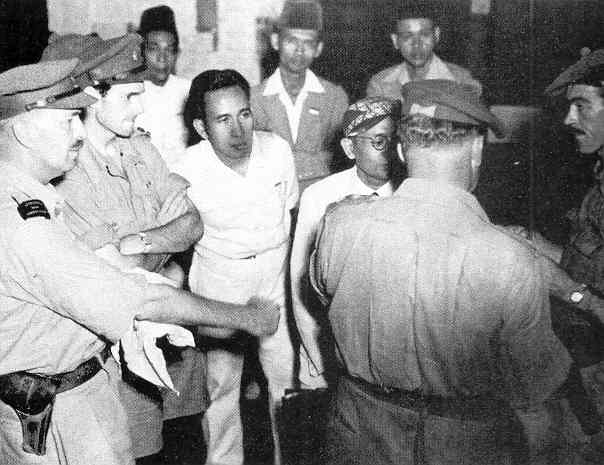
Not until September did
the British
arrive in Indonesia, to take over from a greatly demoralized Japanese occupational
force – giving the Indonesian nationalists weeks of opportunity to establish
themselves.
Imperial War Museum,
London
Dutch Institute for Military
History
at Balapulang – August
17, 1946
Government Institute for
War Documentation, the Hague
National Archives
National Archives
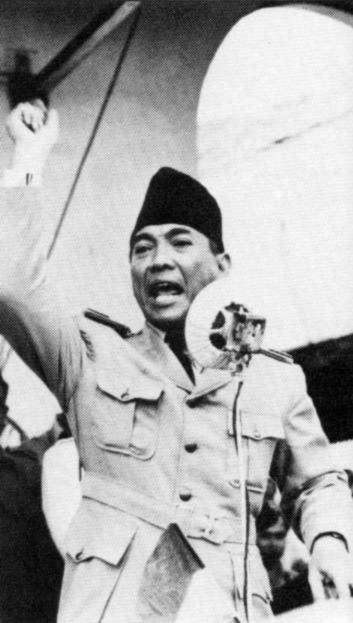
As for Gandhi, the horror of the social breakdown (which ironically
caught him by surprise) caused him to try to bring down the passions by
going into another one of his fasts (five days), which had been able to
back down the British, but which seemed to have little effect on the
Indian population. Then in early 1948 he was gunned down by a Hindu
fanatic, who was incensed at Gandhi's call for Hindu-Muslim toleration.
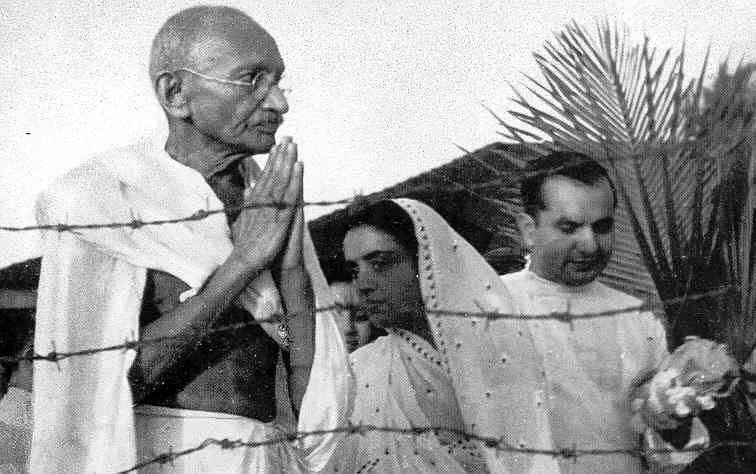
In early 1942, at a time
when the
Japanese were threatening to overrun the British Empire everywhere, Gandhi
decided to resume his civil disobedience campaign to topple British authority
in India. He refused to cooperate with the British in fending off
the Japanese – and was arrested and detained for the next 21 months. 
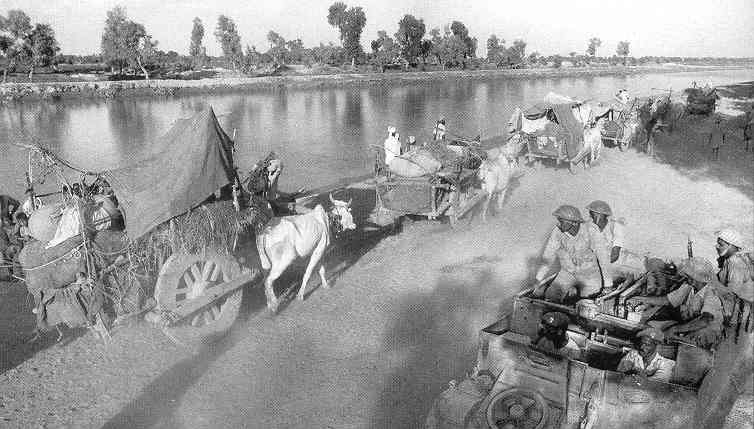
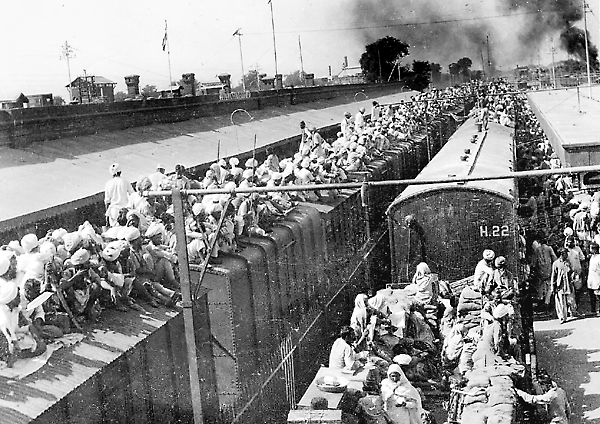
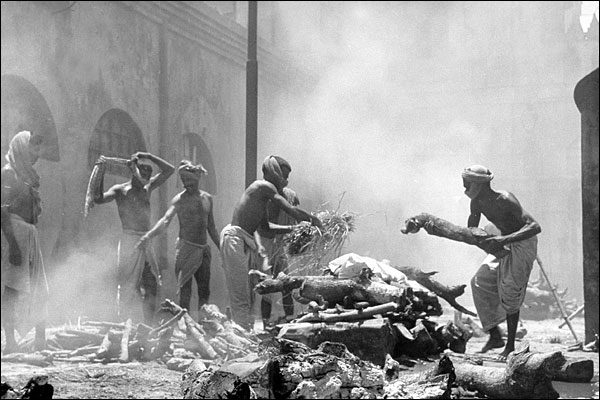
He ended the fast the following day when leaders of both communities met to sign a peace agreement.
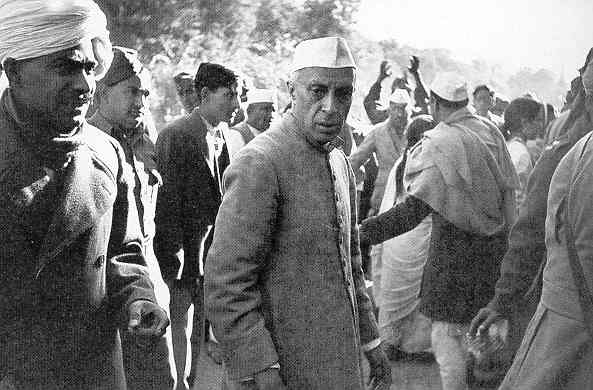
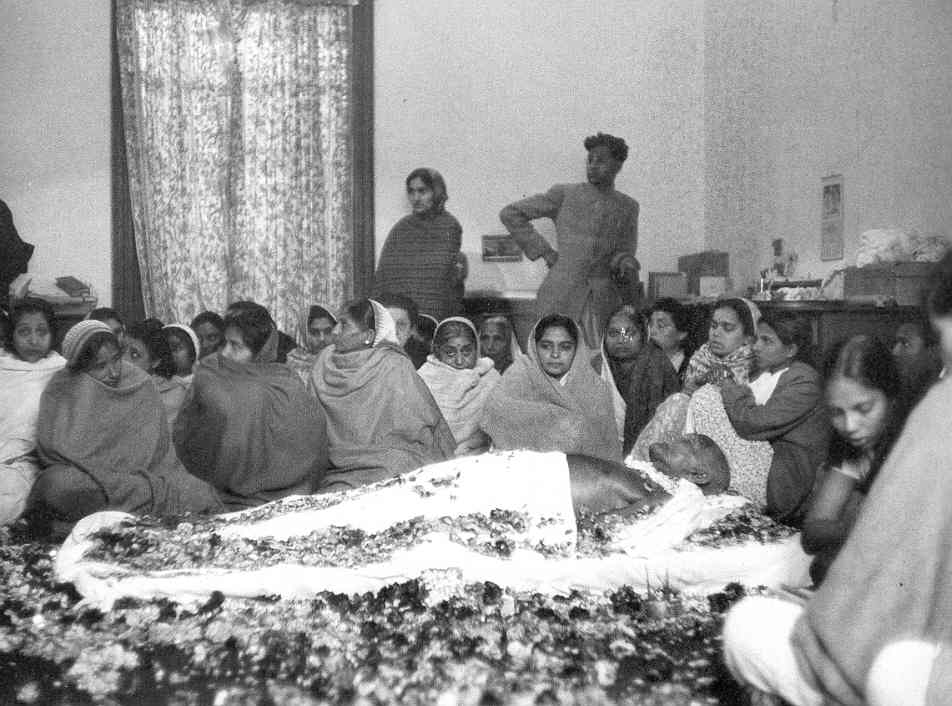
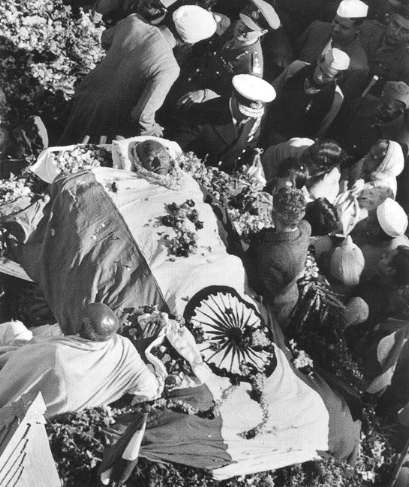
![]()
By the spring of 1948
when the worst
of the cross migration of Muslims into Pakistan and Hindus into India had
finally slowed down (the Sikhs had no land of their own to migrate to)
as many as 15 million people had been transplanted in the two new countries.
The figures of those who died in this massive upheaval are unknown:
estimates run from several hundred thousand to as many as a million.
called by the United States
in August and September of 1945
Fotokhronika-TASS,
Moscow
National Archives
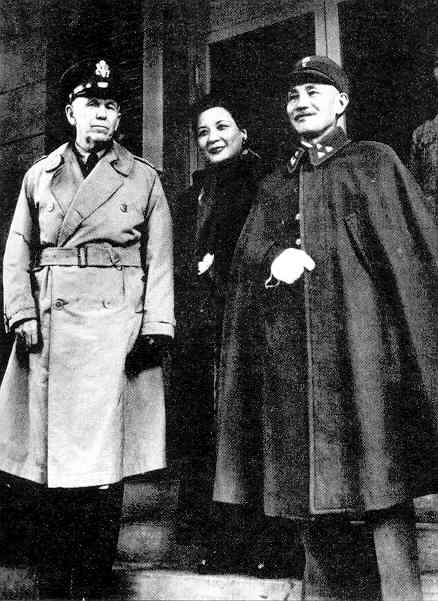
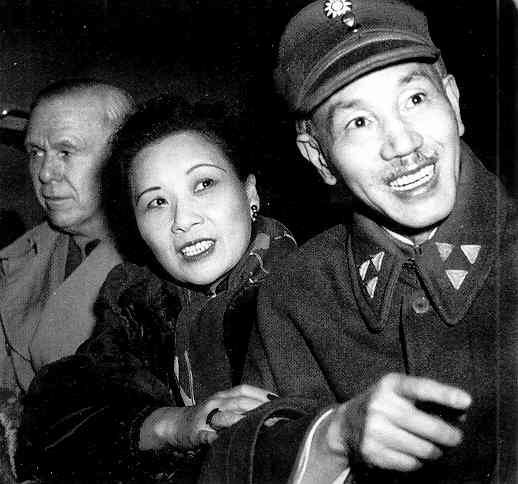
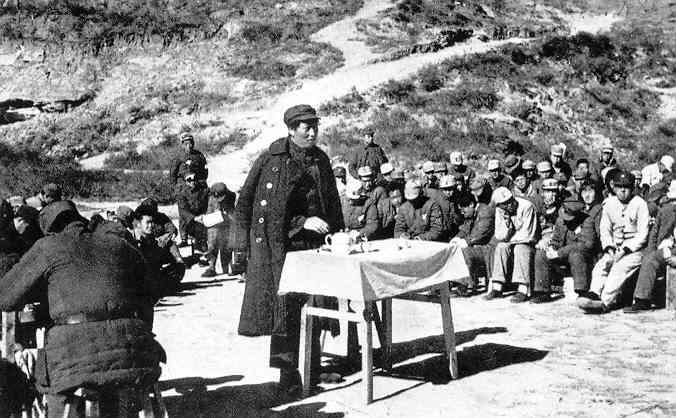
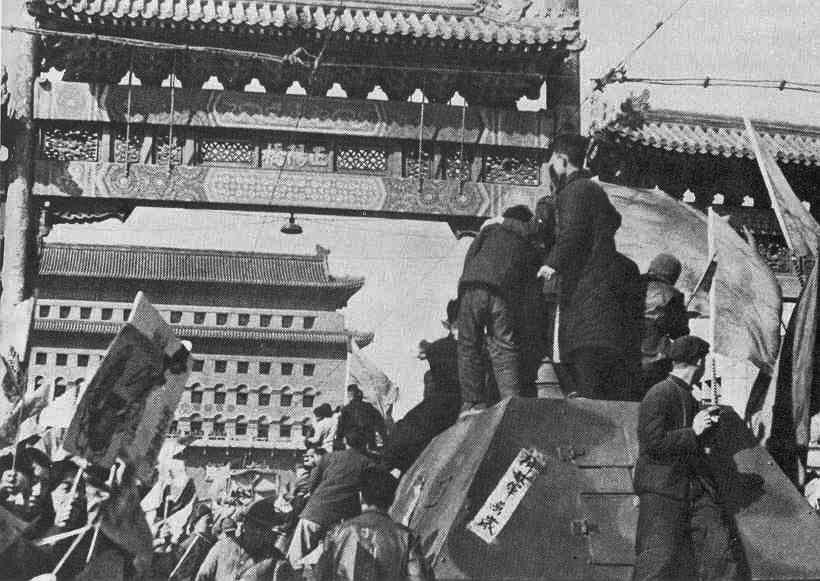
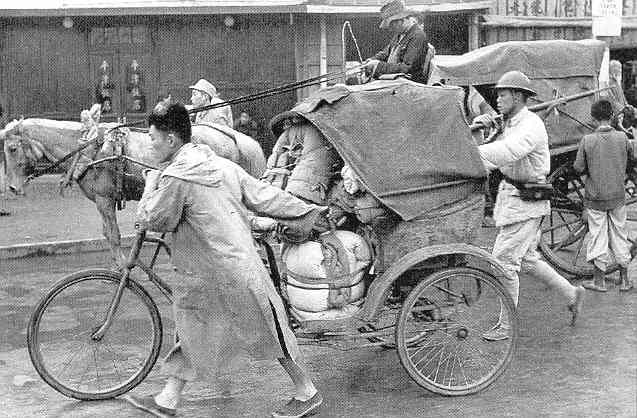
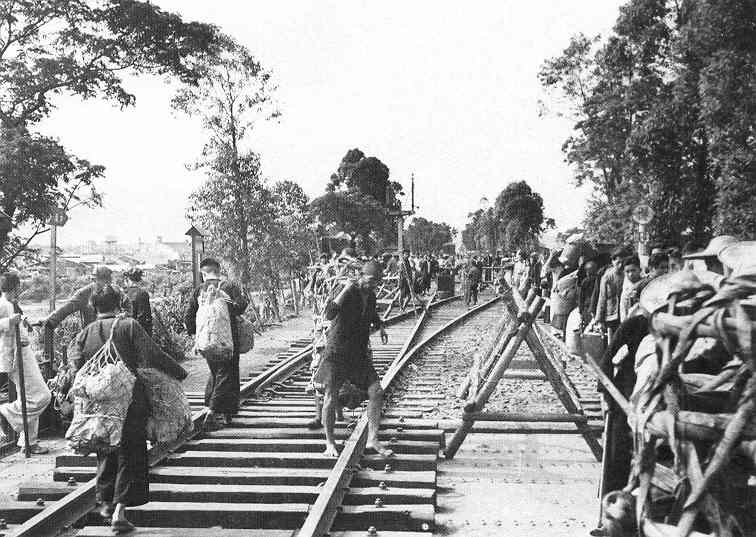
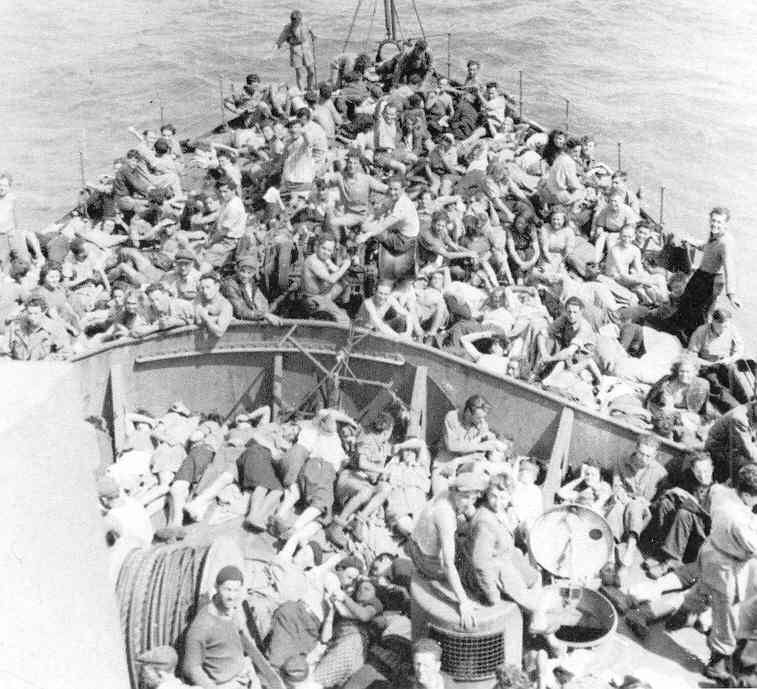
3 million Jews survived
the War – out of the original 10 million of Europe's original population.
To many – if not most – Jews, an independent Jewish state in Palestine
seemed to be the only guarantee that this would never happen again to their
people.
![]()
Fearing a massive
rebellion from
the Arab Palestinians who were irate at the post-War flood of immigrants
into their land, the British began to seriously enforce an immigration
restriction: only 1500 Jews per month. The huge additional flow of
Jews that arrived were at first sent to Cyprus to await their place in
the quota – a process that promised to be years in the making. Soon
overwhelmed in Cyprus, the British took to returning the Jews to Europe. 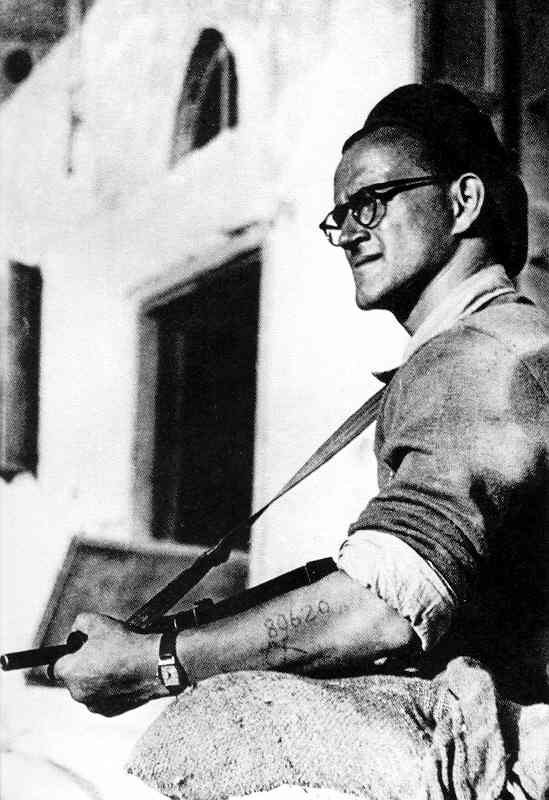
The 60,000-man army-like Haganah,
led by officers who had fought alongside the British towards the end of
the War, now turned its wrath upon its former ally. The Haganah
blew up British radar stations, sank British boats patroling the Palestinian
coastline, blew up oil refineries, British troop trains, RAF airfields
and bridges, cut phone lines and oil pipeline and succeeded in
isolating Palestine – and the British authority within it. 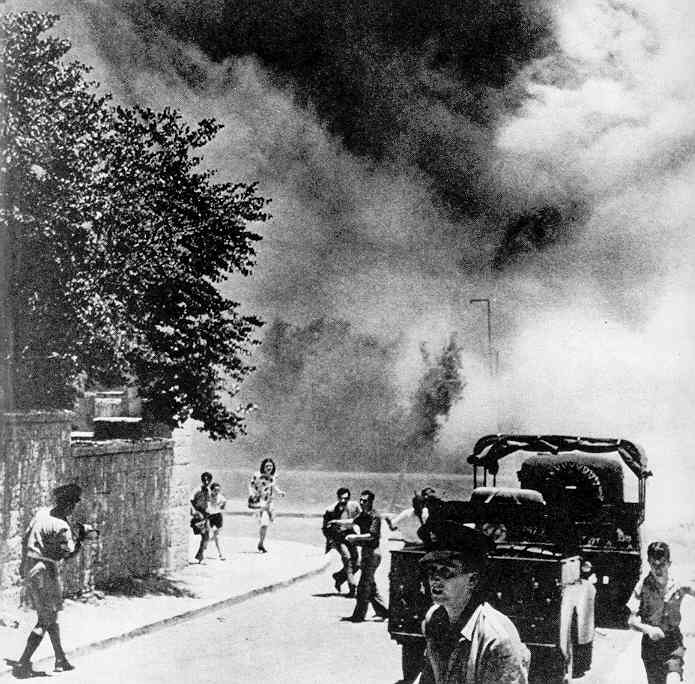
While the
Haganah attempted
to focus on military targets and minimize human casualties, the 2000-man
Irgun led by the Polish refugee Menachem Begin and the much smaller Lehi
or "Stern Gang" worked in quite the opposite fashion. They gunned
down their opponents on the streets, sent letter bombs, dressed themselves
as Arabs or British soldiers in robbing banks, bombing train stations,
attacking police stations and government offices, etc. By the end
of 1946 they had also assassinated 373 people as part of their strategy
of terror. 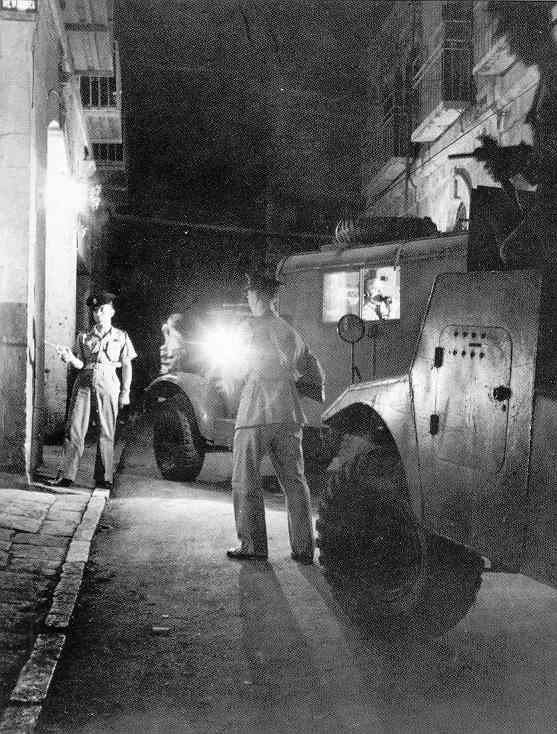
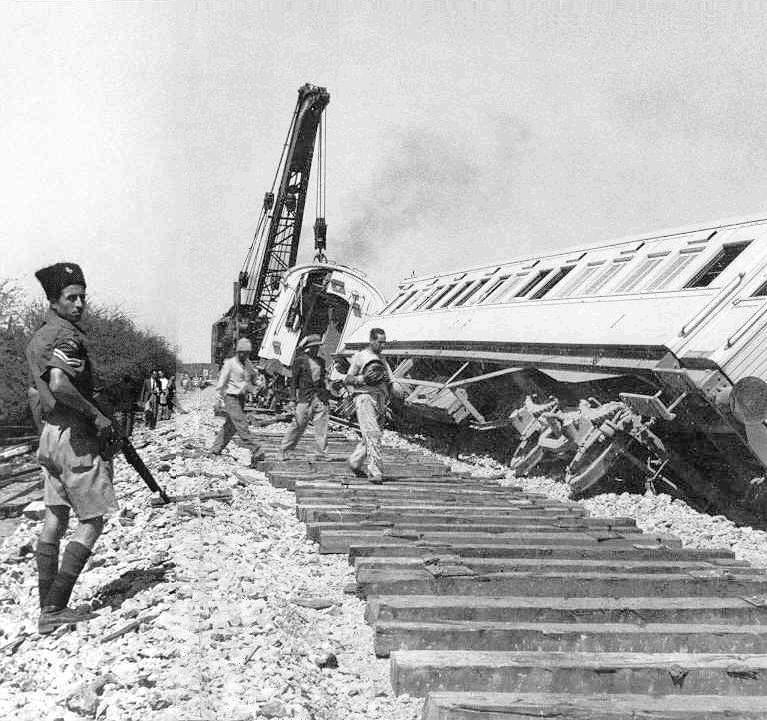
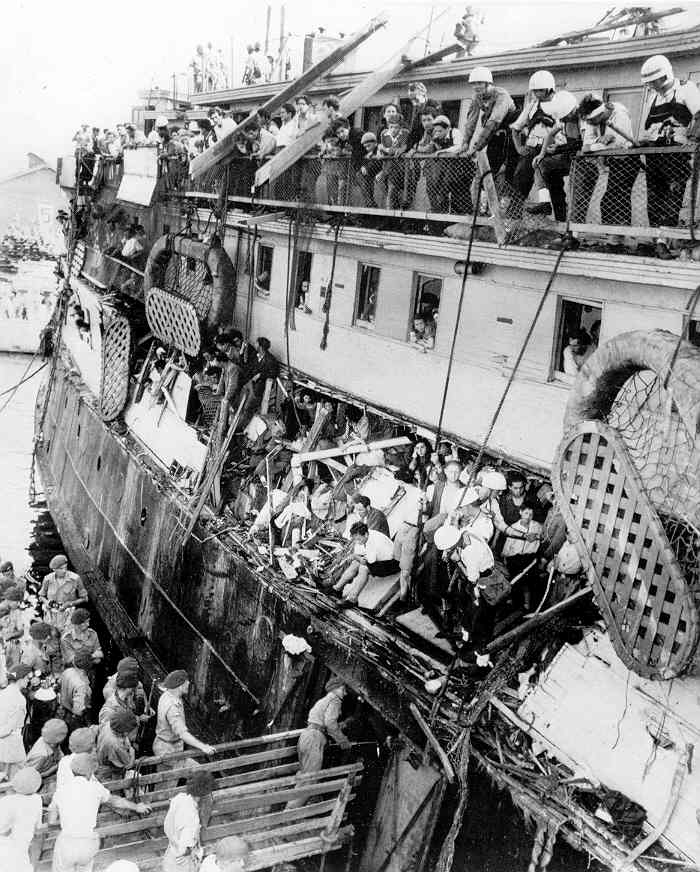
To discourage further
immigration
of Jews, the British decided to make an example of this ship, ramming
and crippling it just outside Haifa, and then transporting its 4500 passengers
back to Europe in three prison ships.
The British guards at
Poppendorf
were less than enthusiastic about this assignment and the Jews were able
simply to slip away. Within a year the camp was empty and the
former detainees finally reached Palestine.
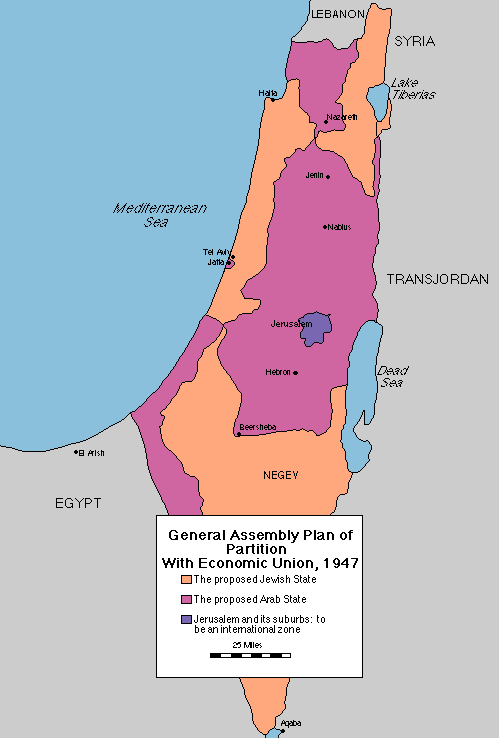
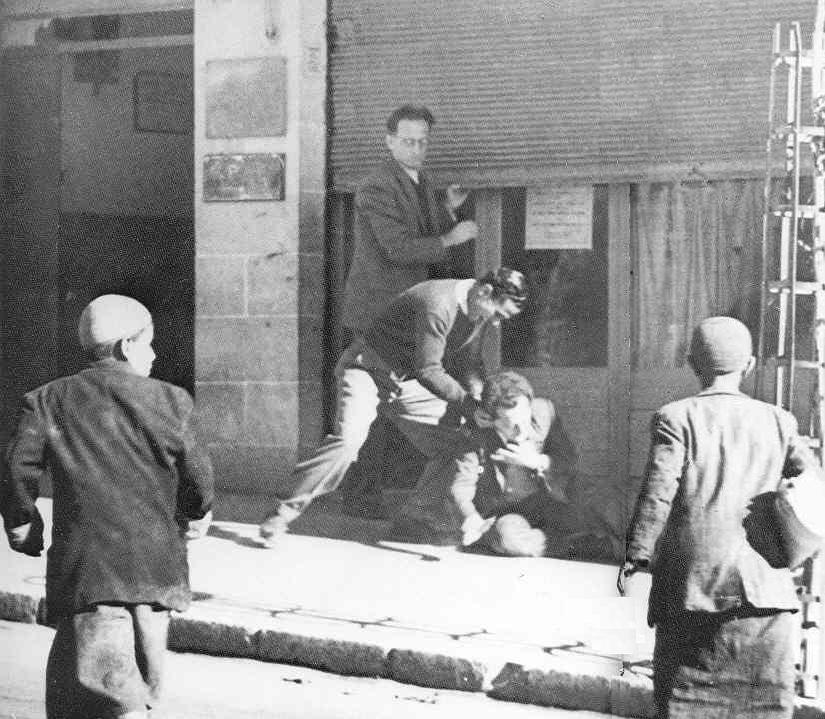
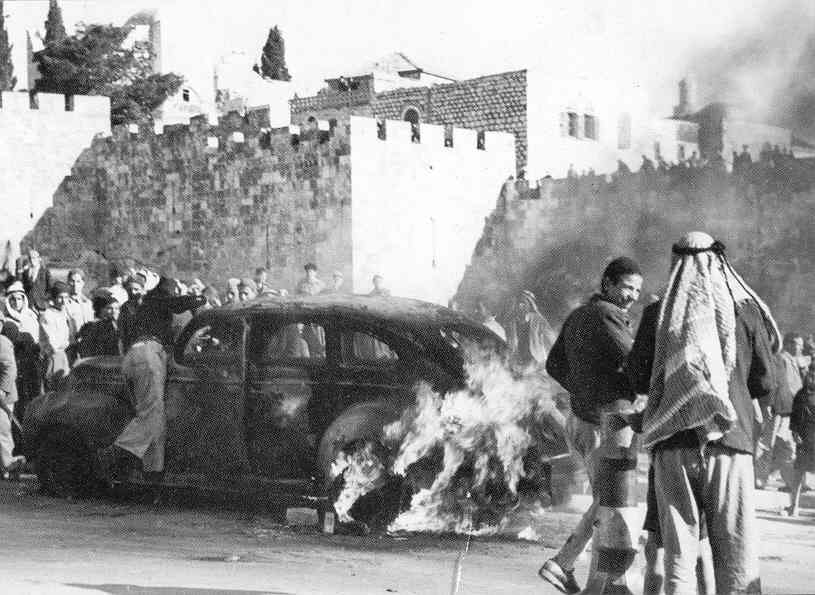
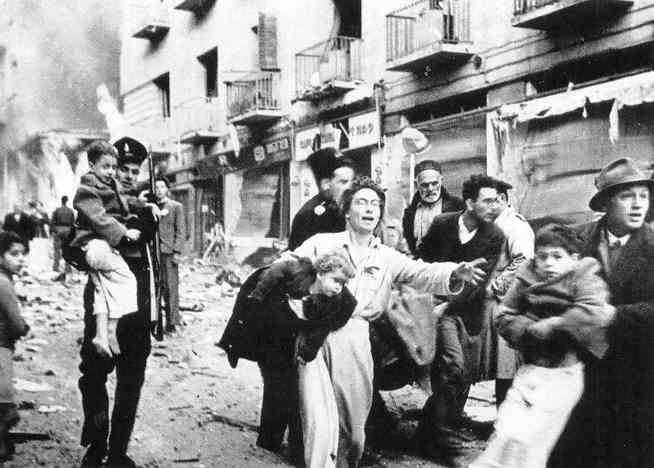
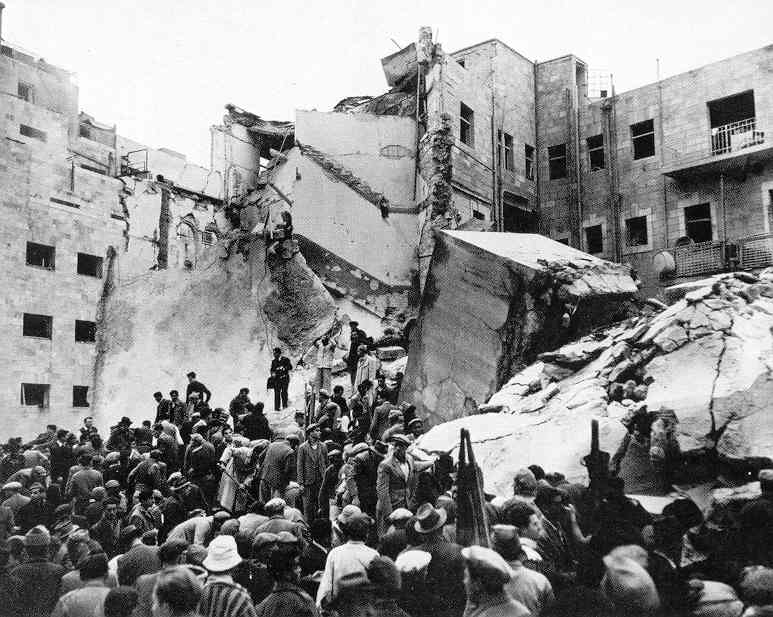
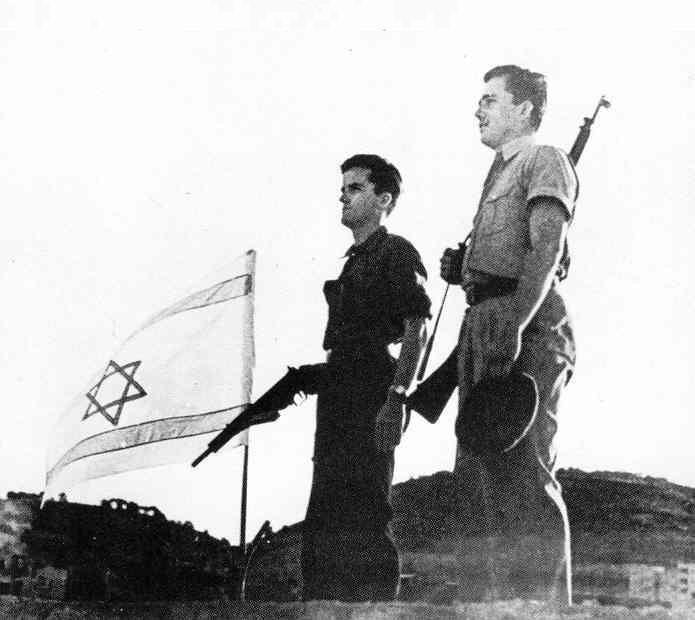
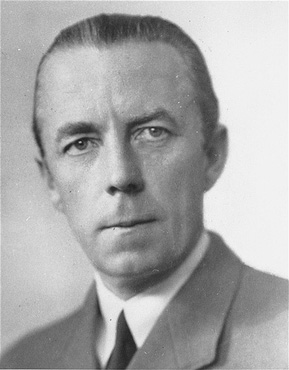
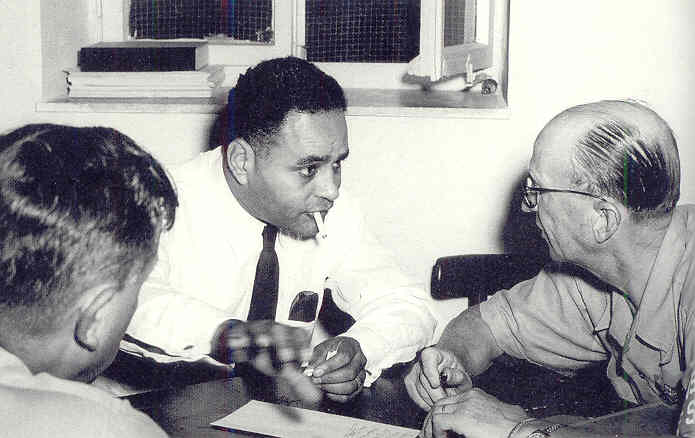
United Nations
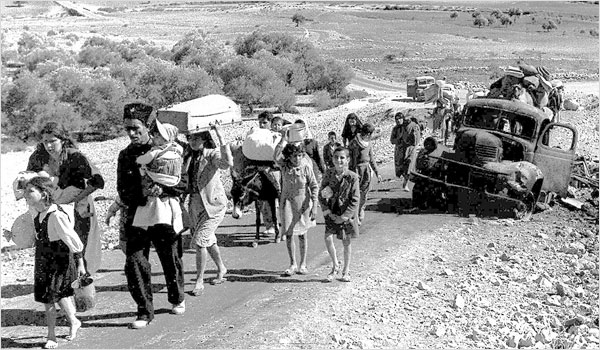
Front cover of The Birth
of the Palestinian Refugee Problem by Benny Morris
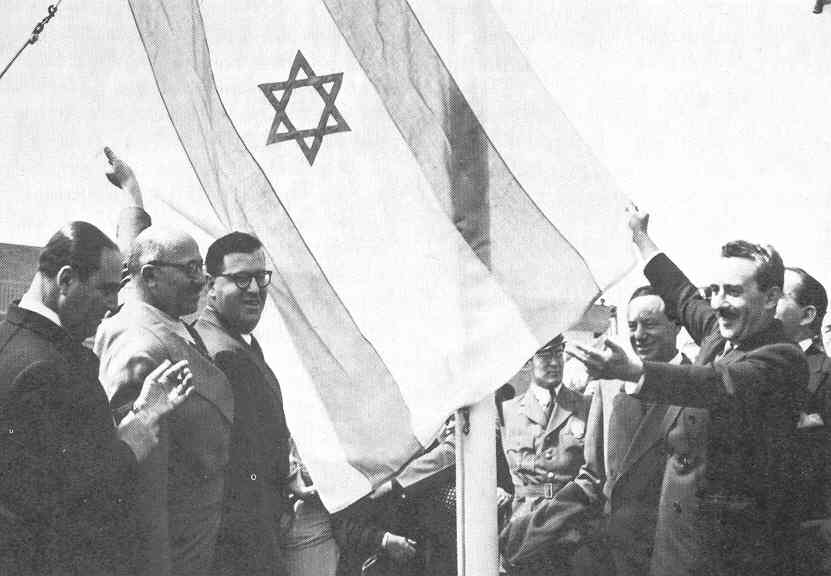
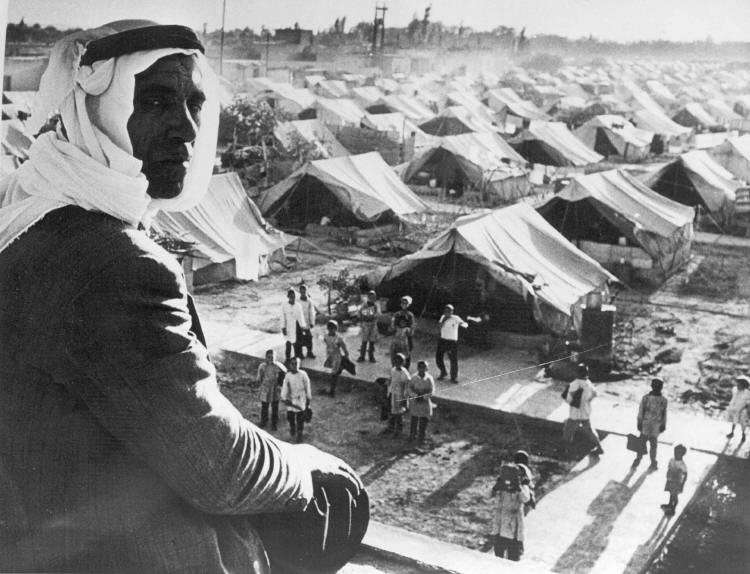
Wikipedia – "Palestinian
refugee"
However, at this point President Roosevelt made it quite clear to the
French that they were not to try to restore their colonial position in
Indochina. Besides America's professed opposition to colonialism or
imperialism, America had been working closely with the Viet Minh, an
anti-Japanese resistance group made up of Communists and Vietnamese
nationalists led by the Communist Ho Chi Minh. This group now was
calling for national independence (from the French) ... and American
policy initially was to support this endeavor.
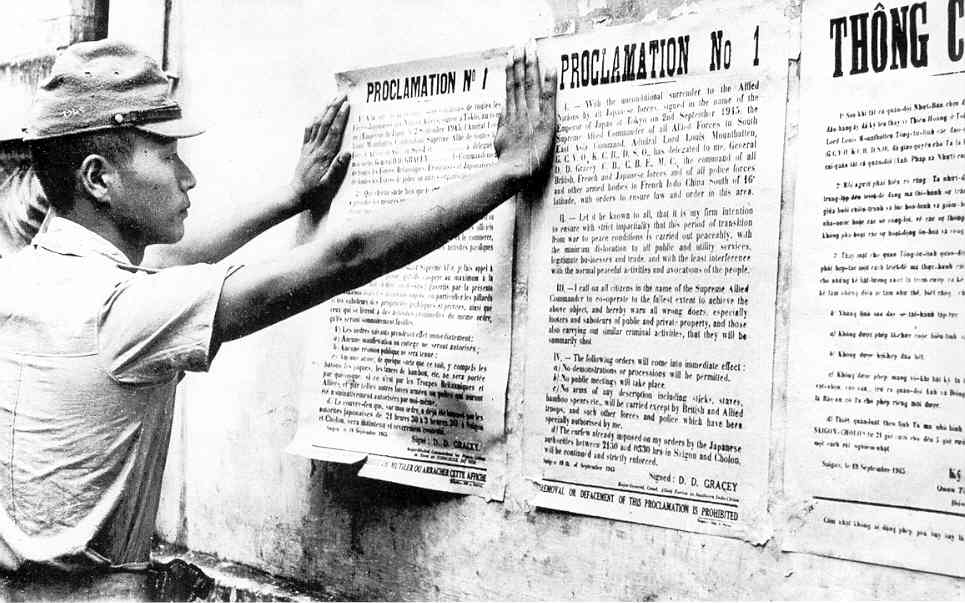
Imperial War Museum,
London
U.S. Army
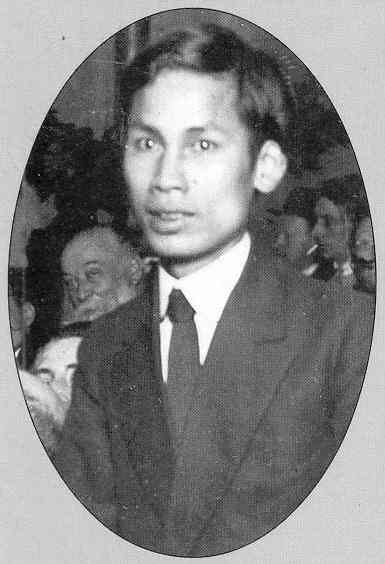
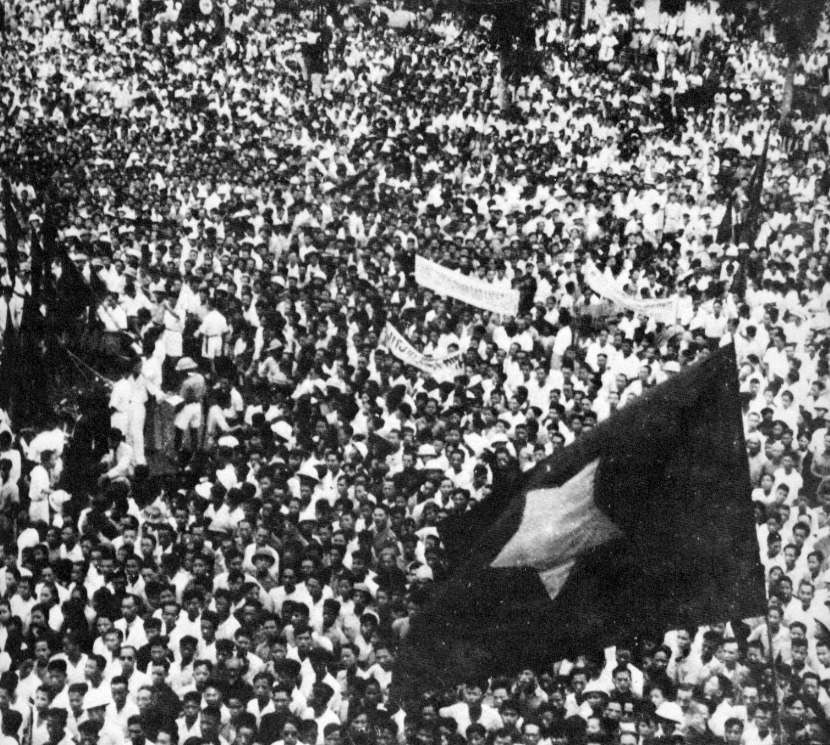
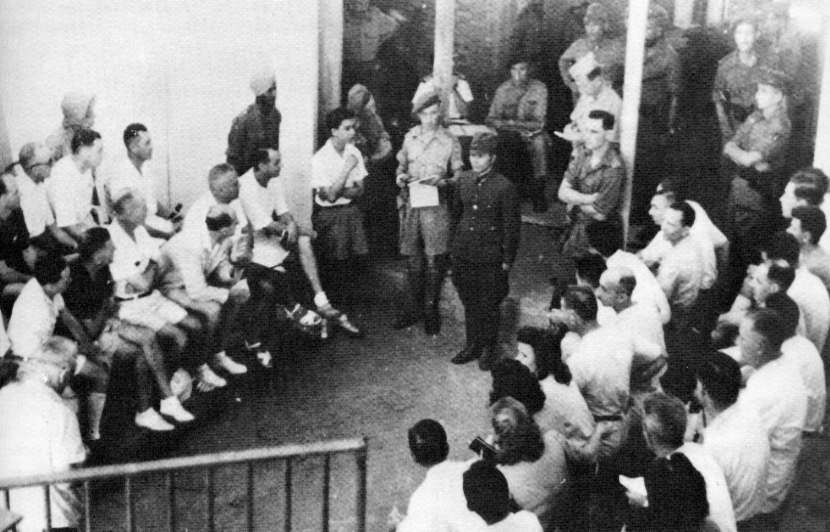
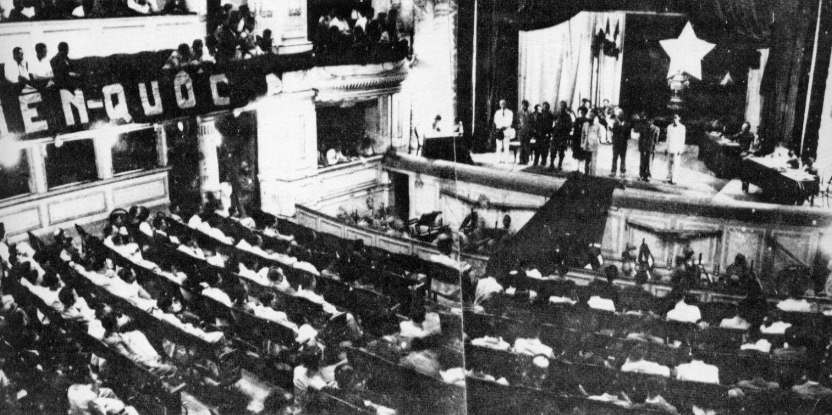
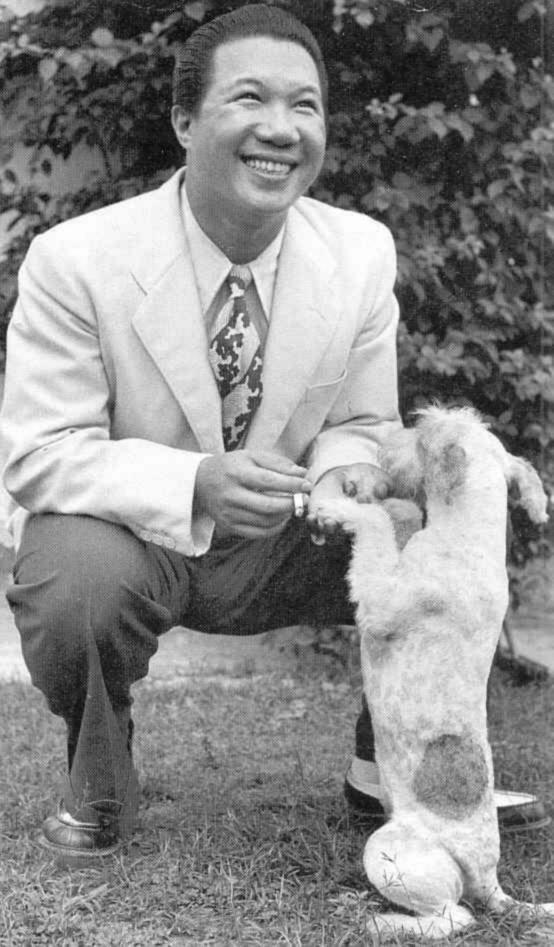

Go on to the next section: Post-War America

